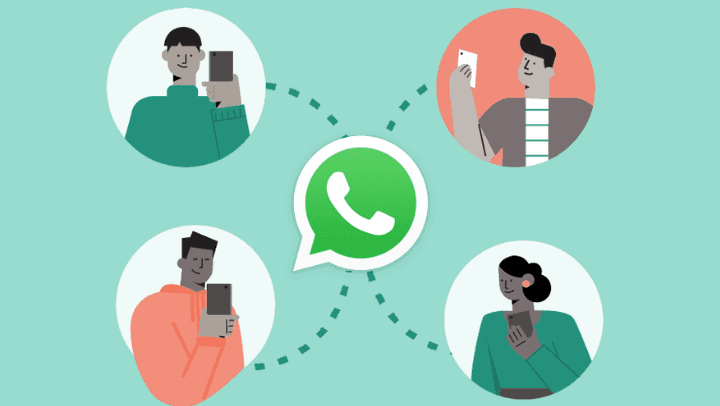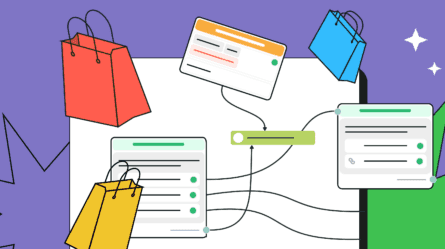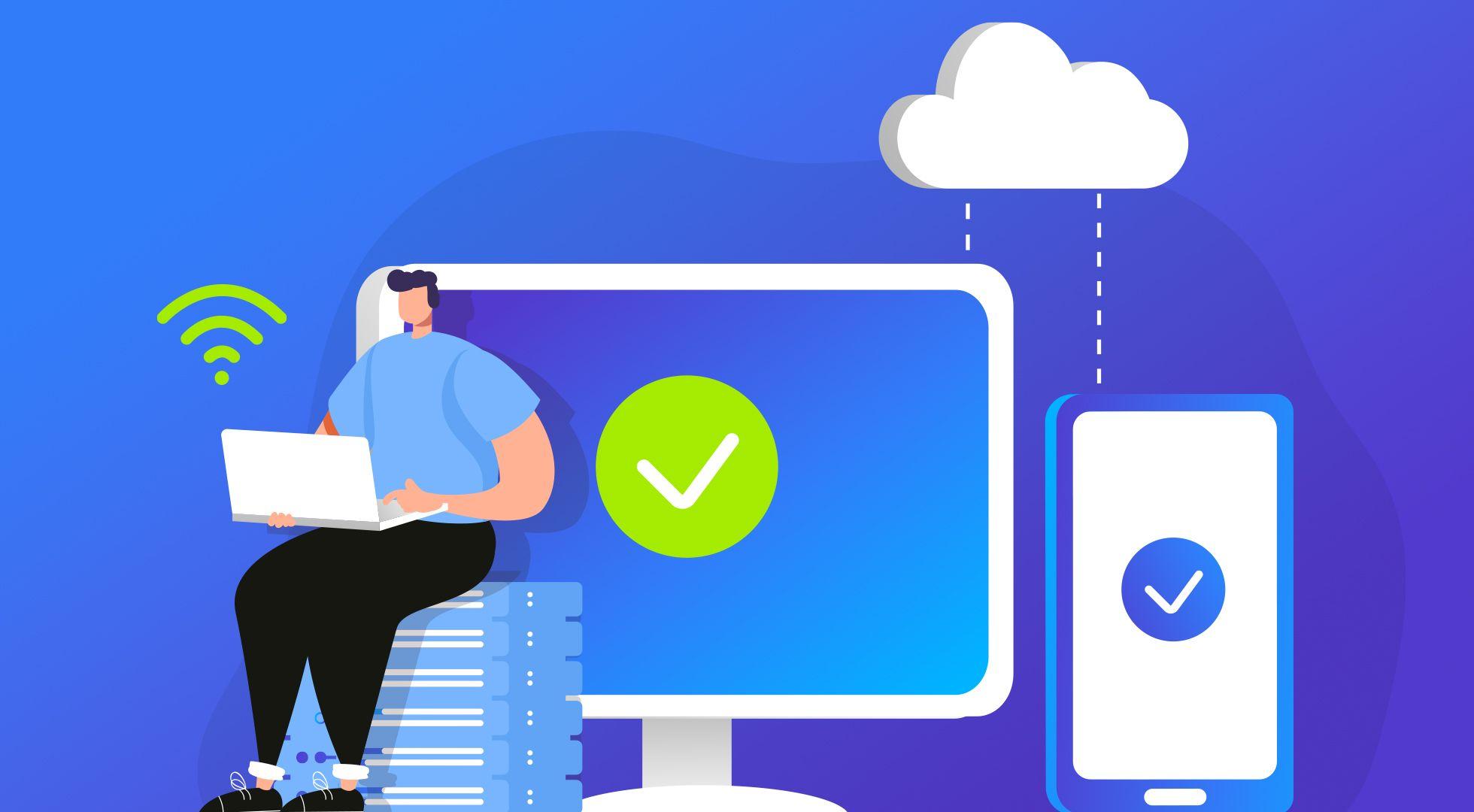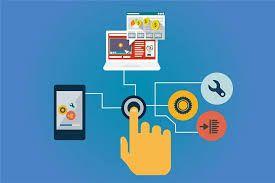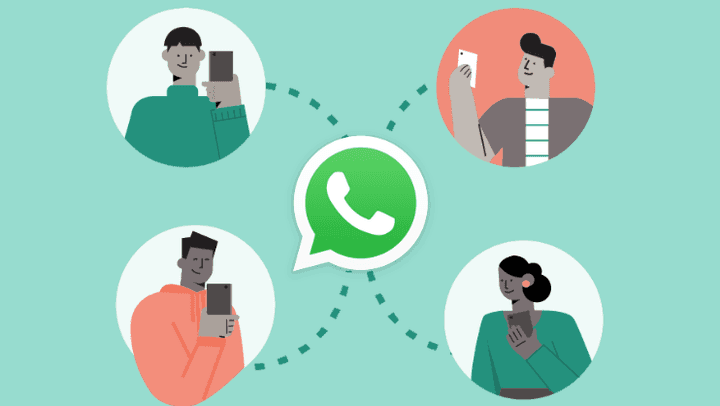
“The Customer Is Always Right”: Fact or Fiction
The phrase “the customer is always right” has long been a business tune, always highlighting the importance of putting customers first to build loyalty and drive success.But is it truly the golden rule of business, or is there more to the story?Businesses have realized that providing a positive customer experience (CX) is essential for growth and success.This includes acknowledging the phrase when a customers is always right and learning how to handle situations where customers may not be right.To achieve this, businesses must prioritize customer-centricity in building strong customer relationships.In this blog, we explore the phrase the customer is always right, its reasons for being true, tips for leading with a customer-centric mindset, and how to handle situations where the customer may need to be corrected. What does the phrase ‘The customer is always right’ mean?“The customer is always right” is a business motto that highlights a company’s dedication to delivering excellent customer service to ensure satisfaction and loyalty.This slogan emphasizes the importance of valuing the customer’s perspective, even if it may only sometimes be accurate.It acts as a reminder to consistently treat customers with respect and prioritize their happiness and satisfaction, as their presence is crucial for the business’s success.The origin of “The customer is always right “The idea that “the customer is always right” was first introduced by Marshall Field when he opened his department store, Marshall Field’s, in Chicago in 1881.Two other pioneering retailers later adopted this concept: Harry Gordon Selfridge and Swiss hotelier César Ritz.They were both creative and resourceful businesspeople as they adopted the slogan “Le client n’a jamais tort” (meaning “the customer is never wrong”) as early as the 1890s.The goal was to:Ensure customers feel valued by training support teams always to treat them respectfully and prioritize their needs, regardless of the situation.Build customer trust and move away from the prevailing notion of “buyer beware.”Emphasize the importance of addressing customer complaints seriously and fairly.Enable employees to focus on solving problems and satisfying customers with successful solutions.5 Reasons why the customer is always rightThe saying “the customer is always right” shows the importance of putting the needs of the consumer first.While this phrase is not always strictly accurate, there are several reasons why businesses often adopt the “customer is always right” mindset.Happy customers result in higher customer acquisition and retention ratesImpressing customers and offering customized customer service may enhance retention and increase sales among existing customers, regardless of how long your firm has been in operation.According to Small Business Trends by Samson Haileyesus, the likelihood of making a sale to an existing customer is significantly higher, up to 13 times, compared to selling to a new customer.In fact, customers who are satisfied with your business are more inclined to use your products again and recommend them to others.Fulfilling customer demands sets you apart from your competitorsClients have strict requirements and are prepared to go elsewhere if you fail to meet their expectations.According to 123formbuilder, after experiencing one negative incident, 61% of customers are likely to switch to a competitorAcknowledging the customer is always right and their perspective, as well as addressing their concerns helps businesses differentiate themselves and stay ahead of the competition.Delighted customers are more likely to enhance your brand reputationIt’s important to make your customers happy, as they can help promote your brand through positive customer service experiences and recommendations.This word-of-mouth and online customer service promotion can build trust and a strong reputation for your business.By prioritizing customer satisfaction, you can turn happy customers into brand advocates.This belief that the customer is always right is vital for long-term success, as customers are more likely to engage with businesses that they trust and believe prioritize their needs.The customer is consistently entitled to a feeling of empowermentEmpowering clients to use your products independently is key to building long-lasting relationships.Knowledge bases and FAQs are two great resources to help clients find answers to their queries and become more self-sufficient.Providing these resources can lead to greater customer satisfaction, reduce the workload on your support team, and build customer loyalty.Customers can make or destroy a companyCustomers have a significant impact on a business’s success or failure. By employing the phrase “customer is always right” , and listening to their needs and concerns, businesses can build a loyal customer base.To ensure customer satisfaction, businesses should establish procedures for quickly receiving and responding to feedback promptly.This can involve:Creating online feedback formsSetting up customer service communication channelsTraining employees to handle complaints fairlyHow to maintain a customer-first mentalityEnsuring that your clients receive exceptional service and have a positive experience with your business should be a top priority. Discover more about how to lead with a customer-first approach.Develop a deep understanding of your target audienceThis involves conducting market research, analyzing customer data, and staying up to date on industry trends.By knowing your customers’ preferences, behaviors, and pain points, you can create your products and services to better meet their needs.Prioritize communication and transparency with customersIt is vital for businesses to promptly address customer feedback and communicate solutions clearly and understandably to foster trust and loyalty.Maintaining a customer-centric approach involves being transparent about any concerns and providing straightforward instructions about product usage to minimize discontent and improve satisfaction.Provide an outstanding experience for your customersTo improve customer support quality, it is important to keep in mind that your customer is always right and provide them with an exceptional experience. This can be achieved by offering various communication channels.Building a strong connection with customers makes it easier for them to engage with your business and increases the likelihood of their loyalty.Furthermore, focusing on the customer’s needs helps to create trust and a positive image of your business. Consider using contact management software to enhance communication with customers.Additionally, provide a customer self-service portal or knowledge base software for customers to find solutions independently.Foster a culture of customer-centricity within your organizationThis means ensuring all employees, from top management to frontline support teams, are aligned to put the customer first.Even though customers may not always be right, it is still important to understand their point of view by placing their needs above all else.Additionally, offering training programs, incentives, and performance metrics can all help support this customer-first mentality and ensure that customer satisfaction remains a top priority.How to stay customer-centric when the customer isn’t rightIt is important to maintain a customer-centric approach even when dealing with situations where the customer may not be right, as this is essential for preserving trust and goodwill. Here are some strategies to help with this.Conduct additional investigation on the issueCustomers frequently believe they have all the information needed to make a judgment or decision.Before recommending a solution, it’s critical to fully explore the problem if the customer is in error or is missing critical information.Since you are the subject matter expert in the case, your role extends beyond simply providing solutions; it involves first acknowledging that the customer is always right. This will help in guiding the customer through a process of discovery and enlightenment.Initiating a thorough investigation of the issue can offer customers more details and valuable insights, increasing trust in your expertise.It is important to base judgments on information rather than emotions.Focus on understanding, not being rightPay close attention to the customer’s sentiment and attempt to empathize with their point of view.By exploring their concerns further, you can identify the underlying reasons for their behavior.This may require asking specific questions to better understand their perspective or providing a supportive environment for them to openly communicate their emotions.Regardless of whether the customer’s perception appears to be mistaken, actively listen to their complaints .Recognizing their perspective can aid in finding mutual understanding or resolving any misconceptions.Always remain calm in a professional wayWhen faced with an upset customer or a mistaken customer, it is important to stay composed regardless of the problem.The goal is not to prove a point but to listen to the customer and address the issue efficiently. Try to refrain from reacting emotionally.In a situation where tensions are high, it may be beneficial to pause and carefully consider the tone of your communication. This can prevent you from sending a message that could worsen the situation.Provide alternative suggestionsIn instances where the customer’s specific request cannot be met or if there is a misunderstanding regarding a particular policy or product feature, it is advisable to propose alternative solutions that cater to their needs to the best of your ability.By doing so, you demonstrate your commitment to achieving a mutually satisfactory outcome. Rather than simply pointing out mistakes, offer constructive suggestions that guide the customer toward a more favourable resolution.This approach not only showcases your proficiency as a customer service representative but also underscores your expertise in the relevant field, resulting in a positive outcome for all parties involved.Consider the use of the phrase “the customer is always right” to make an improvementView these customer concerns as a chance to enhance your customer experience strategies. While “the customer is always right” might not be ideal, focus on building a positive relationship with the customer in the long run.Unhappy customers, regardless of fault, possess valuable insights and feedback that can contribute to the growth of your business.Leveraging this customer feedback loop can lead your business to success and set it apart from competitors.Embrace the phrase “the customer is always right” in businessIt has been over 100 years since the phrase “the customer is always right” emerged and became well-known as a reminder to treat consumers with respect and compassion.As experts in customer experience, the objective of putting the needs of your customers first never changes, even with technological breakthroughs and global shifts.You may set your company apart from the competition with the manner your agents deal with consumers.Because consumers can easily share their experiences on various channels, it is even more important for businesses to interact and treat their customers well.Schedule a live demo and enhance your support team’s customer service abilities by integrating LIKE.TG customer service software into your organization.Feel free to start a 15-day free trial to explore its many features. If you have any questions about its features, contact us through the LIKE.TG support team.Feel free to share your thoughts and suggestions in the comments section below.
![Customer Care: Why It’s Essential for Business Success [+ Examples]](/_next/image?url=https%3A%2F%2Fcms.like.tg%2Fuploads%2F415_8c9eb85f5c.png&w=3840&q=75)
Customer Care: Why It’s Essential for Business Success [+ Examples]
Without customer care in business, both customers and employees would experience heightened frustration.Customers would struggle to get help, and employees would face escalated issues without proper support channels, which in turn affects the survival and success of the company.Jannik used to greet each customer in his online bookstore with a virtual smile. He carefully assisted an man who was looking for the most recent book by his favorite author.Grateful for the help, the man returned with companions. Word quickly spread, and Jannik’s considerate attention transformed the small online store into a famous online bookstore.By bringing personalized care to the digital realm, Jannik’s bookstore became more than just a place to buy books—it became a beloved online bookstore where customers felt valued and supported.This is a powerful illustration of the value of providing true customer care, which can transform your business. Let us learn what customer care is, its importance, examples, and more. What is customer care?Customer care is how companies treat their customers with kindness, humility, and respect to build an emotional bond, trust, and loyalty.It involves more than just providing required services or technical assistance. Rather, it prioritizes addressing the emotional needs of clients and building strong bonds with them.You can determine satisfaction levels, pinpoint areas in need of development, and monitor performance over time by measuring customer care with metrics such as:Net promoter score (NPS)Customer effort score (CES)Customer satisfaction score (CSAT)Customer care vs. customer service vs. customer experienceThe three concepts are different but closely related. Each has a unique role in the customer-business relationship. This is how they differ:Customer care vs. customer serviceCustomer care and customer service are related concepts frequently used interchangeably.They refer to distinct elements of the customer-business relationship:Customer careCustomer serviceIt emphasizes on the complete approach used to develop and maintain positive relationships with customers throughout their entire journey with the business.This refers to the assistance and support provided to customers when they have queries, issues, or require help related to products or services.Its main objective is to ensure that clients feel appreciated, supported, and satisfied during their entire engagement with the firm.Its main objective is to attend rapidly, effectively, and completely to the demands of customers.The goal of providing excellent customer care is to build enduring customer connections with clients by encouraging advocacy, loyalty, and trust.Interactions with customer service representatives are often transactional, with an emphasis on handling urgent issues or requests.Customer care vs. customer experienceA customer-centric strategy must include both customer service and customer experience.They complement one another to produce meaningful and satisfying interactions that promote customer satisfaction, loyalty, and advocacy.Customer careCustomer experienceIt pertains to the measures and tactics that a company uses to guarantee that its consumers have sufficient assistance, support, and consideration during their engagement with the brand.It describes how consumers view a brand generally based on their interactions and experiences during their customer journey.It is made up of various components, including customer service, support channels, complaint handling, feedback management, and relationship-building programs.It is made up of various elements, such as product quality, usability, brand messaging, marketing communications, website navigation, customer service, and post-sale support.The goal of customer care is to build lasting emotional connections with clients by providing value and personalized assistance at every stage of the customer journey.It aims to ensure that every interaction adds to the overall happiness and loyalty of customers.9 Efficient customer care best practicesCompanies can improve customer retention, cultivate lasting relationships with clients, and set themselves apart in a highly competitive marketplace by adopting these customer care best practices:Making yourself easily accessible to your clientsBusinesses show their commitment to providing excellent customer care by making it easy for customers to reach them.Some of the ways to ensure you are always within reach are:Including your phone number, email address, physical address (if relevant), and URLs for messaging or live chat platforms on your website.Make sure your website is optimized for smartphones and tablets, ensuring a seamless user experience on any device.Integrate live chat support into your website, allowing customers to initiate real-time conversations with support agents directly from any page.Use push notifications to keep them informed about their inquiries, updates, and promotions, enhancing customer communication efficiency.Actively listen to your customers’ concernsListening involves giving the customer your complete attention, whether over the phone, by email, or in person, without any interruptions.Put yourself in the customer’s shoes and try to understand their point of view and show empathy for their situation.Even if you might disagree with them or are unable to help them right away, acknowledging their emotions and frustrations can develop trust reducing tension by acknowledging their feelings.Focus on first impressionThis component sets the tone for the whole business-customer interaction.You can show that you care for your customers by:Always extending a nice greeting to clients, whether they are in person or online, to help them feel important right away.Make sure the professionalism of your brand is consistently reflected in all client touchpoints, including your website and communication platforms.Establishing credibility and trust right away, making sure that all your conversations are clear, courteous, and free from errors.Manage your customer expectationsWhen customers have clear, realistic needs, they are more likely to be satisfied with the service they receive, even if issues arise.Here are key strategies to achieve this:Specify response times, resolution times, and the level of support customers can expect.Offer clear solutions or alternatives that can be realistically delivered and communicate these openly with customers.Regularly update them on the status of their orders, service requests, or any changes that may affect them. This helps manage customer expectations and reduces anxiety.This proactive approach to customer care ensures that they feel informed, valued, and confident in their customer interaction with your brand.Be transparent in your communicationTransparency involves ensuring that all the information you give customers about your goods, services, rules, and procedures is accurate and simple to understand.You need to:Notify customers of any improvements or changes you make to your products, along with the reasons behind them as you provide assistance and direction to customers during the transition period.Show accountability by owning up to your mistakes, making corrections, and providing the affected clients with suitable compensation or refunds.Transparency in customer care leads to increased customer satisfaction and enhanced brand loyalty creating a stronger relationship between a brand and a consumer.Train your employeesEmployees must receive regular training to understand the unique demands and preferences of their customers.You can:Train your employees to actively listen and to have the patience to connect with consumers, truly understand their problems, and provide appropriate answers.Providing staff with thorough knowledge of your goods or services is equally important as it gives them the assurance to respond to customers’ questions, provide accurate information, and offer helpful advice or troubleshooting assistance.Furthermore, training teaches the importance of working independently, offers clear decision-making guidance, and instills a sense of responsibility for ensuring customer satisfaction.Personalize your interactions with your customersThis approach not only builds rapport but also strengthens the relationship between your business and the client. You can show that you are aware of their needs by:Addressing them by their names.Thinking back to previous interactions.Acknowledging their personal preferences.Personalized messaging, customized offers, or relevant guidance tend to attract positive responses from customers, increasing brand advocacy and loyalty.Companies that put personalized customer service first in their interactions stand out from competitors who provide generic or uniform experiences, strengthening customer relation and increasing brand loyalty.Respond to your customers promptlyA prompt response establishes a good tone for the entire exchange by demonstrating professionalism, attentiveness, and a commitment to customer satisfaction.To achieve this, businesses can utilize various help desk software that enable fast and efficient responses.Some key features:Automated responsesAutomated ticketing systemsArtificial intelligence (AI)Live chatBy investing in these features and strategies, businesses can provide prompt and effective responses to customer inquiries.This not only enhances satisfaction but also cultivates customer trust and loyalty, laying a strong foundation for long-term success and growth.Appreciate and recognize your customersCustomers are more likely to recommend a business to others and make repeat purchases when they feel valued.Effective methods to appreciate customers for their support include sending them customized thank-you notes or implementing a loyalty program that rewards repeat customers with points, discounts, or exclusive offers.Research by Personify states that, according to 91% of respondents, they are more inclined to do business with organizations that appreciate their clients.By giving consumers a sense that they are respected and appreciated, businesses can provide memorable experiences that result in long-term success.Why is customer care important?Customer care is praised as the cornerstone of prosperous business operations that satisfy and even go beyond the requirements and expectations of their customers.Here are some of the benefits of customer care:Builds brand loyaltyGood customer care creates an emotional bond between the brand and its customers.This connection makes customers feel valued and appreciated, fostering loyalty and a sense of belonging. Loyal customers voluntarily become brand advocates.These can be instrumental in building a strong, positive reputation and can influence potential customers through testimonials and reviews.Leads to revenue growthEffective customer care involves understanding customer needs and preferences. This knowledge allows businesses to customize their offerings and suggest relevant products or services, increasing revenue.According to Forbes, 60–70% of sales are made from existing clients; only 5–20% are made from new customers.When customers trust a company, they are more open to additional purchases. Trust built through high-quality customer care can facilitate upselling and cross-selling.Reduces churn ratesEffective customer care helps build strong relationships with customers based on trust, satisfaction, and loyalty. Bad customer service can result in loss of business or customers who opt for other businesses.With this in mind, businesses can lower churn rates and increase customer retention over time by putting a high priority on customer care and responding to issues quickly and efficiently.Strengthen customer trust and relationshipsWhen customers encounter problems, they seek assistance or resolution promptly.Customer care teams are equipped to respond to these issues by troubleshooting technical problems, handling billing discrepancies, or resolving service complaints, ensuring that customers don’t feel ignored or neglected.By effectively addressing customer concerns and resolving problems, businesses can build stronger relationships with their customers and differentiate themselves in the competitive marketplace.Identifying areas for improvementCommunication with customers, whether through support calls, emails, or social media channels, provides a direct avenue for customers to voice their opinions, concerns, and suggestions regarding products or services.Through these interactions, businesses can identify recurring issues or pain points that customers experience.These could range from product defects to service delivery problems or even areas where the customer experience can be improved, leading to the development of better products and services that meet customer needs and preferences more effectively.Customer care examplesThese examples show how businesses in a variety of areas show their dedication to providing excellent customer care by taking proactive steps and offering customized experiences that put the needs of the customer first.LIKE.TGLIKE.TG is known for its excellent customer care and software for customer assistance. Recently, a LIKE.TG customer left a comment on G2 requesting that LIKE.TG add a mobile app and CSS customization for websites.With a thorough and thoughtful response from the customer care agent, the customer received a clear response that shared news of major additions to LIKE.TG’s services.The response mentioned that support for CSS customization has been logged as a potential addition, indicating that LIKE.TG is not only addressing current issues but also planning future enhancements based on customer feedback.The response showed LIKE.TG’s commitment to customer satisfaction and trust-building by offering a personal, transparent, proactive, and future-focused response.L.L.BeanL.L. Bean, a renowned outdoor apparel and gear shop, is praised for its high-quality products and outstanding customer care.One customer left a review on Reddit about their experience with the business and complemented them on continuing to provide excellent service.They related their experiences interacting with L.L. Bean customer care, pointing out that all their dealings with the company were excellent, even after the firm ended its indefinite guarantee in 2016.The customer valued the way the customer care staff responded to their inquiries regarding previous product policies and even put him in touch with the L.L. Bean archives.This account shows L.L. Bean’s continuous commitment to offering outstanding customer care by meeting their customers’ requirements, whether it is by providing thorough answers to product inquiries or timely service.StarbucksStarbucks is known for its exceptional coffee as well as a variety of drinks made with espresso, teas, pastries, and snacks.One customer asked Starbucks on Facebook about a good coffee beverage. They mentioned that they enjoyed cold brew with mocha but that they had to have a decaf alternative because of dietary constraints.Starbucks gave them a personalized recommendation for an iced decaf Americano with mocha right away, based on their preferences and decaf needs.The prompt and courteous exchange demonstrated Starbucks’ dedication to efficiently handling consumer questions.The customer was pleased and responded with enthusiasm, saying they were eager to try the suggested drink.Starbucks demonstrated its commitment to providing exceptional customer service by offering this customer a customized and useful solution that made them feel acknowledged and appreciated.Enhance customer care for your businessRemember that achieving excellent customer care is an ongoing process. It calls for constant dedication, flexibility, and readiness to listen and address the changing demands of your clients.Stronger brand reputation and stronger customer relations are the results of every effort you make to improve customer care.Are you ready to take your customer care to new heights? LIKE.TG will empower you to boost your customer care, create enduring connections, and promoting your company’s growth.Schedule a live demo to get started on the path to providing outstanding customer care or get a free trial and see the difference firsthand. Feel free to contact us if you need any additional support.Hope you found this blog post helpful. We value your feedback: Feel free to add any ideas or suggestions by leaving your comments in the provided space below.

Troubleshooting Guide: How to Effectively Create One
No product is flawless. Products fail from time to time, and when they do, customers need a solution. This is when troubleshooting guides are critical.Depending on a guide’s availability and the troubleshooters’ skills and experience, customers are often able to solve their problems themselves.According to a study conducted by Higher Logic, 77% of customers have a more positive perception of businesses that provide self-service choices for client support.When provided with such options, your end users are likely to resolve their issues independently, reducing the workload on your support staff.With this data point in mind, it is clear that businesses benefit greatly from developing troubleshooting guides for their customers.This blog will explore common approaches to troubleshooting and provide simple steps to writing troubleshooting guides. What is the troubleshooting definition?Troubleshooting is a step-by-step approach to discovering the root cause of a problem, resolving it, and restoring the product to operation.Troubleshooting guides are written step-by-step instructions for resolving issues with a specific product or process.They list common issues and recommend solutions, empowering users to resolve problems independently.For instance, if your product is help desk software and your customers encounter technical issues, providing clear troubleshooting guides would make a big difference to your customers.They could resolve their issues quickly and avoid similar problems from reoccurring.Types of approaches for troubleshooting problemsVarious approaches can be utilized to identify and resolve issues effectively. Here are some of the most common ones:Top-down approachThis method starts investigating the issue at the highest level of the product and works down to the lowest level. It is often used in network troubleshooting and software debugging.Bottom-up approachThis approach begins at the lowest level of the product and works upwards. It’s useful when you suspect the problem is at the base level, such as hardware issues or lower-level software functions.Divide-and-conquer approachThis method involves breaking down the system into smaller parts and testing each separately to isolate the problem.Follow-the-path approachThis method involves observing and comprehending the interactions of various components and then utilizing that path to pinpoint the source of the problem.Move-the-problem approachThis method relocates the problematic product to another environment to isolate and observe it. If the issue persists after the relocation, the problem is in the product, not the environment.If the product functions normally in the new environment, the issue is likely in the original environment.It’s important to note that this approach should only be considered if all other troubleshooting methods have been unsuccessful.How to write troubleshooting guides in six stepsCreating troubleshooting guide templates is a great way to ensure consistent and comprehensive problem-solving documentation.Here’s a step-by-step approach to writing an effective guide:Pick a scenario for troubleshootingMake a list of issues customers may encounter when utilizing your product or service and organize it into categories. Here are some tips for creating a comprehensive list of troubleshooting scenarios:Identify common issues: List common problems users face with your product. This can be compiled from customer feedback, support tickets, or personal experience with the product.Detail the scenarios: Clearly describe the scenarios where the issue might occur. Include relevant background information such as the product version, environment (e.g., operating system, network configuration), and specific actions leading up to the problem. Don’t just list problems; create a narrative.After making this list, pick an issue to be the subject of your troubleshooting guide.Identify the main reason for the issueThis is where you clearly define what the cause of your selected problem is. Be specific! Diagnose the underlying cause of the problem by following these guidelines:Gather data: Collect information about the issue from various sources, including error messages, logs, and user reports.Analyze signs: Look for patterns that point to the root cause. For example, does the issue occur only with certain files or under specific conditions?Think like a user: Put yourself in the user’s shoes. What steps might lead to the problem? Consider various factors, such as configuration settings, user errors, or software bugs.Break down the problem: List and categorize potential causes based on likelihood. This helps narrow down the issue and find the most relevant solution.Example: The product is not responding due to a network connectivity issue.Establish realistic routes to solving the problemDevelop practical and achievable solutions to the issue by following these guidelines:List possible solutions: Brainstorm multiple solutions that address the identified root cause. Start with the simplest and most common fixes. Customers appreciate quick solutions, so provide easy fixes first. Consider both immediate fixes and long-term solutions.Evaluate probability: Assess the likelihood of each solution, considering user skill level, resource availability, and time required.Prioritize solutions: Rank solutions based on effectiveness, ease of implementation, and impact.Offer multiple paths: Not all problems have one solution. Provide alternative troubleshooting steps for different scenarios.Example:If the product is not responding, try the following:Restart the systemCheck the Wi-Fi connectionUpdate the systemPut the solution into practiceAfter understanding the issue and determining solutions, implement them yourself. Follow this procedure:Step-by-step implementation: Break down the solution into clear steps.Test the solution: Apply the solution to the problem scenario to ensure it resolves the issue.Make adjustments: If the solution doesn’t fully resolve the issue, adjust and start at step 1 again.Document straightforward directionsCreate user-friendly documentation of the troubleshooting process and publish it in your knowledge base. Ensure each step is detailed sufficiently and numbered for users to follow.The following are suggestions for writing troubleshooting guides:Clear and concise language: Focus on clarity, use simple language, and avoid jargon as much as possible. Define any necessary technical terms.Logical flow: Organize the steps logically. If multiple solutions exist for a problem, list them from easiest to hardest or from most likely to least likely to work.Visual aids: Include screenshots, diagrams, or short videos to help illustrate the steps and enhance user understanding, especially for complex procedures.Consistent formatting: The guide should have a consistent structure. Use headings, subheadings, bullet points, and numbered lists for easy readability.Example:If the product is not responding, do the following:Restart your system. (Include a screenshot of the power buttons).Check if your system is connected to the correct Wi-Fi network. (Include a screenshot of Wi-Fi settings.)Update your software. (Include a link to the driver download page and screenshots of the installation process.)Regularly test the troubleshooting guideFrequently test and refine a troubleshooting guide to ensure its essential elements remain accurate and effective.Ongoing testing: Regularly test the product and its troubleshooting guide to identify new issues and ensure existing solutions are still relevant.Update documentation: Revise the troubleshooting guide based on new findings or changes to the product.Seek feedback: Gather user feedback to understand if the guide is helpful and where improvements can be made.Refine and update: Regularly revise the guide based on feedback and new issues encountered. Add new solutions, clarify unclear steps, or remove outdated information.Establish realistic routes on how to troubleshoot the problemDevelop practical and achievable solutions to the issue by following these guidelines:List possible solutions: Brainstorm multiple solutions that address the identified root cause. Start with the simplest and most common fixes. Customers appreciate quick solutions, so provide easy fixes first. Consider both immediate fixes and long-term solutions.Evaluate probability: Assess the likelihood of each solution, considering user skill level, resource availability, and time required.Prioritize solutions: Rank solutions based on effectiveness, ease of implementation, and impact.Offer multiple paths: Not all problems have one solution. Provide alternative troubleshooting steps for different scenarios.Example:If the product is not responding, try the following:Restart the system.Check the Wi-Fi connection.Update the system.Put the solution into practiceAfter understanding the issue and determining solutions, implement them yourself. Follow this procedure:Step-by-step implementation: Break down the solution into clear steps.Test the solution: Apply the solution to the problem scenario to ensure it resolves the issue.Make adjustments: If the solution doesn’t fully resolve the issue, adjust and start at step 1 again.Document straightforward directionsCreate user-friendly documentation of the troubleshooting process and publish it in your knowledge base.Ensure each step is detailed sufficiently and numbered for users to follow.The following are suggestions for writing troubleshooting guides:Clear and concise language: Focus on clarity, use simple language, and avoid jargon as much as possible. Define any necessary technical terms.Logical flow: Organize the steps logically. If multiple solutions exist for a problem, list them from easiest to hardest or from most likely to least likely to work.Visual aids: Include screenshots, diagrams, or short videos to help illustrate the steps and enhance user understanding, especially for complex procedures.Consistent formatting: The guide should have a consistent structure. Use headings, subheadings, bullet points, and numbered lists for easy readability.Example:If the product is not responding, do the following:Restart your system. (Include a screenshot of the power buttons).Check if your system is connected to the correct Wi-Fi network. (Include a screenshot of Wi-Fi settings.)Update your software. (Include a link to the driver download page and screenshots of the installation process.)Regularly test the troubleshooting guideFrequently test and refine a troubleshooting guide to ensure its essential elements remain accurate and effective.Ongoing testing: Regularly test the product and its troubleshooting guide to identify new issues and ensure existing solutions are still relevant.Update documentation: Revise the troubleshooting guide based on new findings or changes to the product.Seek feedback: Gather user feedback to understand if the guide is helpful and where improvements can be made.Refine and update: Regularly revise the guide based on feedback and new issues encountered. Add new solutions, clarify unclear steps, or remove outdated information.Examples of troubleshooting guidesMany businesses provide troubleshooting guides for their products. Here are some examples that might help you create your own.LIKE.TGThe LIKE.TG troubleshooting guides offer clear, concise instructions in a user-friendly format to effectively troubleshoot common technical issues.They are a valuable resource for LIKE.TG users seeking help with technical difficulties related to LIKE.TG customer support software.They address common problems agents face during ticket management or customer interactions through the LIKE.TG interface.Additionally, they provide various solutions for integrating with third-party apps such as Microsoft Teams and Azure.MicrosoftMicrosoft provides troubleshooting guides for an enormous range of products, including Windows operating systems, Microsoft Office applications, and online services such as OneDrive and Azure.AirtableAirtable is a project management tool with a troubleshooting guide that addresses performance issues users might encounter.Amazon Web ServicesAmazon Web Services provides detailed troubleshooting guides for its wide range of cloud computing services.These resources address technical issues related to organizing applications, managing storage, and configuring security settings.They include code examples, steps for analyzing logs, and best practices to assist developers and IT professionals resolve complex problems.Why are troubleshooting guides important?Having a troubleshooting guides are crucial to the business. Below are the reasons you should have one:Resolves issues more quicklyWhen troubleshooting guides are available, users can maintain the product’s functionality independently, reducing the time spent contacting customer service teams.Prevents future difficultiesBy systematically identifying and analyzing the root of a problem, troubleshooting guides not only resolve the immediate issue but also provide solutions that prevent similar problems from arising in the future.Boosts customer satisfactionProviding troubleshooting guides allows customers to resolve issues independently, demonstrating the company’s commitment to customer satisfaction.Generates helpful feedbackThe information collected through creating troubleshooting guides and users’ feedback on them helps businesses identify areas for improvement in the product.Creates valuable reference materialsTroubleshooting guides provide a systematic approach to quickly identifying and resolving common issues in the product.When properly published, stored, and maintained, other users can refer to them whenever similar issues occur in the future. They can also serve as onboarding resources for support staff.Create effective troubleshooting guidesTroubleshooting guides are powerful assets for your business, empowering your customers and internal teams to resolve issues efficiently.With a well-maintained troubleshooting guide, you’ll be well on your way to smoother customer support operations and increased customer happiness.Contact us to arrange a live demo and experience how LIKE.TG features can improve your troubleshooting skills and help you better address customer problems. You can also sign up for a free 15-day trial.Was this article helpful to you? Do you have any more suggestions or recommendations? Kindly leave your comments in the space below.
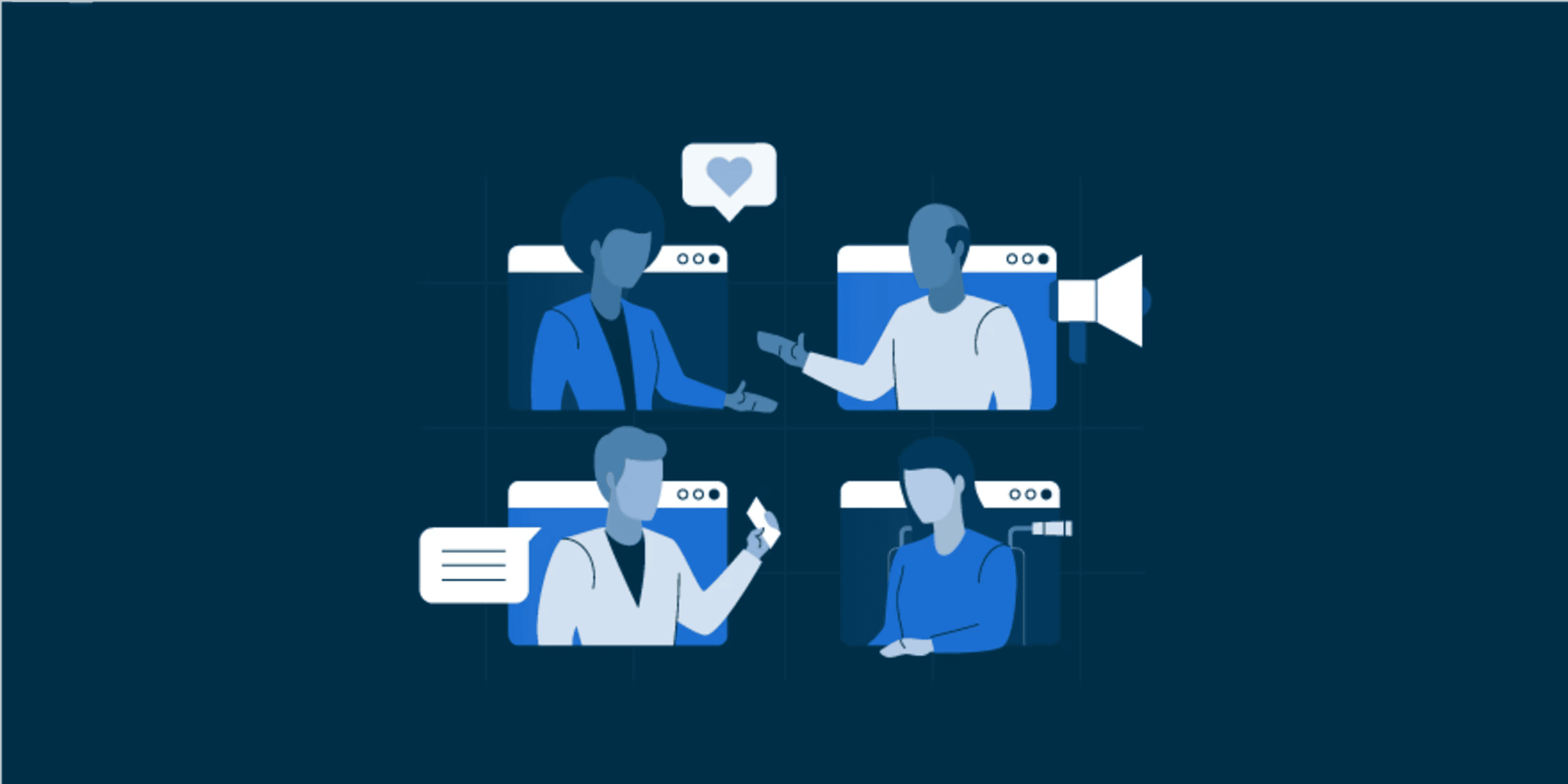
12 Types of Customers and How to Win Them
We are all customers or have been customers at some point. The experiences may be different, and this is mostly because of our needs, choices, and personalities.As a customer, there is always a quality that sets you apart from other customers, making it possible to either get the best deals or just average deals. Appealing to different types of customers is the first step to success. Leveraging each type of customer and their qualities leads to growth and success.This blog will discuss twelve types of customers, their distinguishing qualities, and how you can win each of them. Let’s get started. How to identify different types of customersRecognizing the different types of customers is crucial for any business to customize their services to meet specific customer needs. The following points can be used to identify customer types:Gaining customer feedback: Use surveys, interviews, and reviews for customers to share their opinions, preferences, and levels of satisfaction.Conducting research: Research by collecting data on age, gender, preference, and purchasing power to learn about your different types of customers.Segmentation: Divide your types of customers using demographics, behavior, and geography to identify their motivational features.Social media interaction: Stay active with any information shared in online spaces to gain information on needs for the different types of customers.Use CRM system: By analyzing features such as customer behavior and preferences, it is possible to identify the standards and patterns that will better engage your types of customers.Review customer interactions: To stay in the loop, identify common questions or products shared by your types of customers in their different interactions to determine their needs.What are the different types of customers?The key to success in the business world is knowing the types of customers. You can interact with them more by looking into qualities beyond their facial values. Here are some of the various types of customers that you will definitely encounter in your business.New customersA new customer is an individual who buys your product, service, or subscription for the first time. It is natural for new customers to have questions about the brand or product.What they need:Smooth onboarding: Provide your customers with an outstanding onboarding process as well as exceptional support.24/7 help: Provide them with fast and reliable assistance on the basic concerns they may have.How to win them:Proper welcoming: This can be done by sending an email greeting them and thanking them for choosing to purchase your product, service, or subscription.Social proof: Provide your customers with a use case or a story they can easily relate to. This gives the new customer confidence and makes them feel proud of their decision to purchase your product or service.Impulse customersThese are types of customers who buy products instantaneously. An impulse customer does not spend a lot of time researching the products and mostly buys based on their emotions.What they need:Fast responses: Make your responses as fast as possible before they change their minds.Minimize obstacles: Clear anything that may distract the customer or waste their time.How to win them:Transparency: By making the interaction simple and concise, clearly address their concerns on return policies, warranty details for the product, and product use cases.Quick, effective customer support: Make their decision-making process easier by answering their concerns directly. Stick to the most important details, making your response short, fast, and emotion provoking.Loyal customersThese are customers who make repeated purchases of your products or services and will always be back for more. In most cases, they act as brand advocates for your product through their use cases and referrals.They are highly knowledgeable about your product or service and will use this to convince others of the benefits of using it. As the gold standard, loyal customers will always expect similar or better services.What they need:Proper motivation: Use incentives and loyalty reward programs to motivate them to make referrals and remain loyal.Credit their work: Mention them in an article or a case study to provide them with exposure.How to win them:Excellent customer experience: According to research by Forbes, 73% of customers believe that an a smooth customer experience is key to influencing their loyalty to different brands. By ensuring customer services are standardized and effective, customers are highly likely to remain loyal to your product or service.Be proactive: Ensure that any issue that may lower the standard of the product or service is addressed before it happens. These can be used to improve the quality of the product.Potential customersIndividuals who are not officially customers because they are yet to make a purchase but have shown a significant interest in the product or service.These are customers are at the awareness stage and have either subscribed to your newsletter, filled out a contact form, or made an inquiry through their preferred communication channel.At this stage, they are mainly looking for the X factor that separates your brand from others.What they need:Constant customer communication: Constantly initiate communication to keep them engaged and ensure your support team is always available to help whenever needed.Good user experience: Make the first impression count by having an appealing website design.How to win them:Show product value: Ensure that you ask customers questions about their preferred needs. Use demos, use cases, testimonials, customer reviews, and blogs to show the value of your product.Provide information resources: Use your knowledge base articles and FAQs to provide customers with information at their convenience.Discount customersThey know what they want but are not willing to pay the actual price for the product or service. Instead, they take their time looking for other buyers offering the same product but at a lower price.Such customers only consider the pricing of the product and are the least loyal. They will normally conduct research to find information about the product and the discount offer, if any.Research by Capterra shows that up to 86% of online customers will try a new business if they have coupons.What they need:A subsidized pricing plan: This can be achieved by offering discounted prices on your products or services.Affirmation of value: Assure the customers that despite the discounts, the products are still valuable and worth their while.How to win them:Explain the deal: Ensure that your discount customers understand the deal clearly. The customer has to feel and understand that regardless of the discount, the product is still top notch, and they can save money as well.Provide added value: To ensure customers stay loyal to your brand, offer them more than the initial value. The added value can be exemplary customer support. Exemplary and consistent customer support makes the product reliable, leading to customer retention and satisfaction.Need-based customersThese are types of customers who make purchases based on certain needs. Such customers are challenging to convince because they know what they want and where to get it. Once they visit your website, they will only buy the specific product they need and leave.What they need:Clear information: Provide all the relevant and important information that will inform their decision making.Match their expectations: Ensure the services are quality and live up to their expected standards.How to win them:Ensure the interaction is positive: Always initiate communication with the customers, and make sure to be engaging and positive.Top-notch customer service: Providing outstanding customer service helps differentiate your brand and product from the competition. Ensure that the customer service team is well trained and equipped with the proper skills to engage the customers positively.Browsers (wandering customers)These types of customers are responsible for most of the traffic to your website; however, they have no intention of making a purchase. Despite increasing traffic on your website, they have the lowest percentage of sales revenue.What they need:Appealing website: Make sure the website is both visually appealing and easy to navigate.Proactive customer support: Always reach out first to users visiting your website to provide them with support when necessary.How to win them:Clear and engaging content: Provide customers with well-structured and informative content that is clear.Offer discounts: Discounts are attractive gestures that can be used to lure browsers. By offering discounts, such customers will buy your products, leading to engaging customer relations for the long term.Unhappy customersRegardless of the business, unhappy customers are an inevitable lot that will always be a part and parcel of customer service. Dealing with them is not the easiest task either, and it requires the best customer support service to solve their problems.They are either unhappy with your services or are having a bad day. It rests upon you to ensure that the frustrations are met.What they need:Recognition of the problem: Apologize and address their concerns transparently with valid solutions.Customer follow-up: Confirm whether their problems have been handled appropriately to meet their demands.How to win them:Show empathy: The best way to win over an unhappy customer is to stay calm and listen to their concerns. This makes it possible to understand their concern better by being empathetic. Viewing the problem from the customer’s point of view can give you a different perspective on it and therefore tailor support that meets customer demand.Have a plan: Always have a positive and calm approach towards angry customers. Ensure that your support team is well trained and has the appropriate skills to handle them.Active customersTypes of customers who constantly buy your products or services. They are different from loyal customers because they can easily switch to your competitors if they get a better offer.What they need:Constant communication: Because of their volatility, they need to be sure that you value their presence.Prompt response to their criticism: Stay on top of any negativity that may come via their criticisms by apologizing and providing the customer with proper solutions to their concerns.How to win them:Provide quick customer feedback: Don’t wait until their problem worsens, enhance their success by providing quick responses to their concerns.Train your team: Ensure your support team has the proper skills and knowledge for continuous interaction.Referral customersTypes of customers who learn about your business via recommendations from your loyal customers. They are willing to engage your business because the referral comes from someone they trust.What they need:Smooth onboarding: Provide a comprehensive and clear onboarding plan that promotes the levels of engagement.How to win them:Offer dedicated support: Strive to provide your types of customers with readily available support to address their concerns.Include rewards programs: Offer the customers a discount or an incentive for joining your team.Confused customersTypes of customers who find themselves on your site by mistake. Such customers are highly likely to have questions before and after they buy the product for further clarification.What they need:Clear explanations: Because they lack information on your business, ensure that you provide transparent and precise information on your products or services.Guaranteed quality: Assure the customers that they have made the best choice engaging your business.How to win them:Focus on your unique selling point (USP): Point out the key unique features that make your product beneficial compared to your competitors.Readily accessible support: Provide support information across all communication channels for ease of accessibility.Lapsed customersThese are your previous customers; however, they haven’t interacted with your business for a long time. The reasons for this could be lack of value, switching to competitors, lack of motivation or interest, or changed preferences.What they need:Reassurance on improved services: Prove to the customers that you have made positive changes to your brand. Assure them of the changes and/or solutions made to the services.Focused reactivation campaign: Create a campaign with incentives meant to win back the customers.How to win them:Constant communication: Regularly conduct follow-up and use constant reminders to win them back.Utilize reward programs: Provide them with irresistible offers to encourage them to stay.Acknowledge the needs of your types of customersBy understanding all the types of customers and their needs, it’s simpler to provide standardized products or services that cater to them. Given the competitive nature of the business world, the key is to always make customers happy at the end of the day.All the different types of customers will have specific needs based on their concerns, preferences, and relationships with the company.Start your free trial with LIKE.TG or schedule a live demo to enhance your customer engagement. You can also contact our support team for more information.Did you find this article helpful? Kindly, share your thoughts or suggestions in the comments section below.
![33+ Best SaaS Tools for Businesses [2024]](/_next/image?url=https%3A%2F%2Fcms.like.tg%2Fuploads%2F416_169aebfdc4.png&w=3840&q=75)
33+ Best SaaS Tools for Businesses [2024]
With advancements in technology being embraced, the need for the best SaaS tools in different sectors and departments, such as support, HR, management, reporting, business intelligence, and more, has never been more emphasized.Irrespective of your industry and market, having the right SaaS tools as your productivity and efficiency companion is the best investment for any business looking for that “wow” factor that will make it stand out.This article highlights the compilation of the best SaaS tools in different industries, which are essential for most businesses to consider. What are SaaS tools?SaaS (software as a service) tools refer to any software that is cloud-based, meaning it is hosted online and users can access it via the internet. Generally, SaaS tools require no installation steps to set up and start using.Different SaaS tools have unique features and capabilities to suit different businesses’ needs and preferences. They also cater to businesses of all sizes, including startups, small-to-medium businesses (SMBs), and enterprises.What are the advantages of SaaS tools?Most companies, irrespective of industry and business size, are opting for SaaS for good reasons.User-friendliness: To begin with, SaaS software requires minimal installation and onboarding. All you need to do is simply sign up or log in and you’re good to go!Pricing: When it comes to the initial and operation costs, SaaS generally has lower expenses, compared to the other types of software. It also has varying pricing plans that can accommodate most businesses’ budgets.Accessibility: Most SaaS tools are easily accessible because they are cloud-based, with a majority of them having mobile app support.Scalability: Most of these SaaS tools are scalable. This means they can easily accommodate businesses of varying sizes, from startups to small-to-medium businesses, and enterprises.Wide-range integrations: What’s more, most of SaaS software comes with third-party app integrations.The best SaaS tools in the market today (2024)The following are the best SaaS tools for enterprises that different industries are fast embracing because of their many advantages, such as scalability, security, pricing, user-friendly interfaces, and more. Let’s dive in!Help desk SaaS toolsHaving cloud-based help desk software in any business is vital for managing all customer service operations. The ideal SaaS support tools should be comprehensive, with features such as a ticketing system, AI, automation, multilanguage support, reporting and analytics, multichannel support, task management, and mobile support, just to mention a few.1. LIKE.TGLIKE.TG is the best AI-powered help desk for businesses looking for an all-in-one customer service solution to streamline their support operations.Features It has a comprehensive range of functionalities:Ticketing system to quickly resolve and manage customers’ inquiries and requests.Artificial intelligence (AI) and automation capabilities to streamline support teams’ workflows and boost productivity.Multilingual knowledge base software to ensure information is readily available for self-service in the end-users’ preferred languages.Multiple communication channels such as live chat, emails, and phone calls.Reports and analytics tools to keep track of the performance of different areas of support.Rebranding and customization of ticket fields and forms to suit specific business needs.Wide-range integrations with third-party apps for enhanced agent productivity and collaboration.Mobile support that helps businesses provide on-the-go customer service, ensuring issue resolution is just one click away.Task management to manage and keep track of the progress of each internal teams’ tasks.Multilanguage support that ensures support teams and customers can communicate with ease, irrespective of their native language.PricingFree for startupsScale: $25/month for 3 agentsGrowth: $50/month for 3 agentsEnterprise: $75/month for 3 agentsFree trial period: 15 Days To know more, feel free to reach out to the LIKE.TG support team. You can also book a live demo for a detailed explanation of how the help desk software functions. Start a free trial today, to get the first-hand experience of LIKE.TG’s simple, yet powerful, intuitive features!2. GlassixGlassix is unified inbox software that leverages AI to ensure all business conversations, between internal teams and customers, are managed in one platform. It has SaaS support tools such as canned replies, smart tagging, AI, omnichannel support, and more.FeaturesUnified inboxChatbots and conversational AIMessaging channelsPricing: Starting at $49 per user/monthFree trial: 30 days3. TalkdeskTalkdesk is an AI-powered, SaaS contact center for customer support. It consists of features such as omnichannel support, customer self-service options, customizations, and collaboration tools.FeaturesSelf-servicePre-built integrationsWorkforce managementPricing: Starting at $85 per user/monthFree trial: Not availableReporting and analytics SaaS toolsEvery business needs to have comprehensive reporting and analytics software to get accurate and valuable insights on the performance of different areas and to know the right measures to take to improve operations.4. Bold ReportsBold Reports is a user-friendly reporting SaaS tool with powerful features that take data measurement, report distribution, and management to a different level.It consists of functionalities such as data preparation, 360 visualization tools, embedding capabilities, and more. Bold Reports analytics tools ensure all businesses can clearly visualize and securely access their reports, and quickly make insightful data-driven decisions.Features360 data visualizationDeep embeddingReport distributionWhite labellingMultiple export formatsPricing: Starting at $445Free trial: 15 days5. UniqodeUniqode helps businesses simplify their operations and boost workplace productivity with QR Codes. By using QR codes, businesses can simplify onboarding and recruitment, streamline attendance, collect feedback seamlessly, asset tracking and more. FeaturesDynamic QR Code – Edit your QR Code destination with ease without worrying about reprintingBulk create up to 2000 QR Codes at onceTrack your QR Codes. Understand how people engage with themEasily integrates with 5000+ communication, CRM and other automation tools.6. DatapineDatapine is an interactive business intelligence platform with a variety of dashboards for securely accessing, visualizing, sharing, and managing company data.FeaturesData connectorsEmbedded analyticsDashboardsPricing: $249 per monthFree trial: Not available7. InfoCaptorInfoCaptor is documentation and ad-hoc dashboard reporting software for data prototyping, visualization, and analytics. It is one of the SaaS tools for startups and small businesses using open-source applications.FeaturesLive dashboardsDatabaseWebsite servicesPricing: $39 per monthFree trial: 60 minutes (dashboard consultation for new users)Business Intelligence SaaS toolsFor any business to get insightful information and make good decisions, they need the best business intelligence SaaS tools in the market. Such tools should include powerful features for real-time data analysis, reporting, and visualization, with a variety of dashboards and predictive analytics tools.8. BoldBIBoldBI is cloud-based analytics and business intelligence software. It consists of powerful capabilities such as embedded analytics, data connectors, and real-time data visualization, that help businesses make good data-driven decisions.FeaturesEmbedded analyticsData connectivityPredictive analyticsData visualizationSecurityPricing: Starting at $445Free trial: 15 days9. DatafloDataflo is business intelligence software with data analytics and visualization capabilities that assist organizations to analyze and keep track of their data, leading to actionable and insight-driven decisions.FeaturesCustom dashboardsGoal monitoringSlack centerPricing: Starting at $99 per monthFree trial: 7 days10. DomoDomo is another business intelligence SaaS platform using AI to perform data visualization and analytics functionalities, helping organizations to get insights and make informed decisions. It includes features such as embedded analytics, visualizations and dashboards, reporting and self-service analytics, and more.FeaturesVisualizationReportingData sciencePricing: Contact Domo’s supportFree trial: 30 daysE-Signature SaaS toolsElectronic signature SaaS tools are designed to make it easy for end-users to create, sign and manage digital documents, and ensure the security and compliance standards during the signing process.11. BoldSignBoldSign is a SaaS electronic signature platform that enables businesses of all sizes to securely create, send, and keep track of the e-signatures of their digital documents. It includes key features such as e-signatures, document tracking and management, localization, user management, bulk link signing, and mobile support, among others.FeaturesElectronic signature requestsDocument managementBulk sending and linksLocalizationUser managementPricing: Starting at $10/month for 3 usersFree trial: 30 days12. GetAcceptGetAccept is a digital sales room platform that offers secure e-signature features for creating, sending, and tracking digital documents, empowering support sales teams to perform better.FeaturesElectronic signatureSales content managementContracts and proposalsPricing: $49/user/monthFree trial: 14 days13. Nitro SignNitro Sign is a SaaS e-signature tool for signing, sharing, and managing documents digitally in a simple yet secure way. It consists of features such as electronic signatures, audit trails, document management, bulk signing, integration, and mobile support.FeaturesElectronic signaturesIntegrations and API connectivityDocument managementPricing: Starting at $17.39 per user/monthFree trial: 14 daysHuman resource management SaaS toolsEvery company needs software that can help them seamlessly manage everything about employees. This is where human resource management (HRM) SaaS tools come into play.14. BambooHRBambooHR is one such SaaS tool for human resource management. It simplifies processes such as payroll, hiring, onboarding, employee reporting, database management, and more.FeaturesHR data and reportingHiring and onboardingPayroll, time, and benefitsPricing: Starting at $12 per employee/monthFree trial: 7 days15. Zira.aiZira.ai is an AI-powered staff management solution that streamlines workflows through capabilities such as task or shift management, optimization of complex schedules, time and attendance tracking, and employee communication.FeaturesSchedulingTime and attendancePolicy enginePricing: Starting at $4Free trial: Available16. Hi BobHi Bob is an HR SaaS tool designed with functionalities like time and attendance tracking, workforce planning, managing payroll, monitoring performance, hiring, and onboarding management. Bob empowers HR teams, managers and employees to easily work with and manage all HR-related processes.FeaturesCore HRHiring and onboardingUK payrollPricing: Contact Hi BobFree trial: Not availableVideo conferencing SaaS toolsWhen it comes to remote work, webinars, online collaboration, and virtual meetings, especially for people in different locations, having the best SaaS tools for video conferencing is vital. Every business needs a video conferencing tool to streamline their communication, collaborate better, and enhance their productivity.17. Cisco Webex MeetingsCisco Webex Meetings is a cloud-based video conferencing solution that provides businesses with comprehensive capabilities for webinars or meetings that are professional with high-quality video and audio.It includes features such as meeting recording, screen and file sharing, and real-time messaging. It also has AI-powered features such as breakout rooms, transcription, and noise cancellation.FeaturesMeetings, events, and webinarsCalling and messagingWhiteboardingPricing: Starting at $14.50/ license/ monthFree trial: 90 days18. LivestormLivestorm is a SaaS video conferencing and webinar platform ideal for all types of webinars, virtual meetings, and events. It supports screen sharing, AI transcription, chats, analytics, and more, ensuring businesses have engaging webinars with their audiences every time.FeaturesAI transcriptionsScreen sharingVideo messagingPricing: Starting at $79/month, billed annuallyFree trial: Available19. LifesizeLifesize is a cloud-based video conferencing platform that can be used for meetings of all sorts, from personal calls to large conference meetings. It supports video, audio, recording screen sharing, third-party app integration, and more.FeaturesDirectory supportAudio conferencingMeeting recordingsPricing: Starting at $88 per monthFree trial: 14 daysProject management SaaS toolsBusinesses always need project management SaaS tools to easily manage tasks, plan and keep track of project progress, and more. The following are the best SaaS tools for project management.20. WrikeWrike is a collaborative project management SaaS tool with features like customizable dashboards, collaboration tools, and Gantt charts for task management, resource allocation, project planning, and tracking, for better team productivity and collaboration.FeaturesDashboardsGantt chartsProofingPricing: Starting at $9.80 per user/monthFree trial: 14 days21. CeloxisCeloxis is comprehensive project management software that includes comprehensive tools such as Gantt charts, time sheets, analytics, risk management, and project dashboards. Celoxis is ideal for task management, project tracking, resource allocation, reporting, and financial management. It empowers teams to streamline their workflows better.FeaturesDashboards and analyticsGantt chartsTime sheetsPricing: Starting at $15 per month, billed annuallyFree trial: 14 days22. QuipQuip is a unified productivity platform, suitable for Salesforce end-users looking to streamline their workflows and enhance team collaboration. It supports project management through features such as embedded documents, real-time collaboration, chats, and spreadsheets. Sales teams can collaborate in creating and editing documents, project time tracking, and task management.FeaturesEmbedded documentsChatsSpreadsheetsPricing: Starting at $10/ user / monthFree trial: 30 daysMarketing SaaS toolsBrand awareness and marketing plays a major role in customer acquisition and retention. The best SaaS marketing platforms should have a user-friendly interface and comprehensive marketing tools with affordable pricing plans.23. Constant ContactConstant Contact is a SaaS marketing platform for small businesses looking to grow through digital marketing. It has SaaS tools for small businesses to manage email marketing, social media marketing campaigns, text/SMS marketing, and event registration.FeaturesList-building toolsAI and automationDigital marketingPricing: Starting at $12 per monthFree trial: 30 days24. ActiveCampaignActiveCampaign is an AI-powered email and marketing automation solution, ideal for businesses looking to personalize their marketing campaign efforts and enhance their customer engagement. It has comprehensive functionalities such as email marketing, sales automation, omnichannel marketing, CRM, and audience management.FeaturesMarketing automationAudience managementContent creationPricing: Starting at $145 per monthFree trial: 14 days25. LoomLoom is an AI-powered video marketing and communication SaaS tool. It includes video messaging features such as screen and camera recording, transcription, video editing, storage, and more. It is ideal for any business that wants to create, edit, share, and store video in a personalized and interactive way.FeaturesTranscriptionVideo editingScreen recordingPricing: Starting at $ 12.50/ creator/ monthFree trial: 14 daysOnline survey SaaS toolsGetting end-users to provide feedback is one of the most challenging yet rewarding processes. The ideal survey and feedback platform should have a wide range of templates and customizations to choose from.26. Zonka FeedbackZonka Feedback is a customer feedback and survey platform that enables businesses to collect, analyze, and act on end-users’ feedback. It offers comprehensive features such as survey templates, customization options, reporting and analytics tools, real-time customer feedback, and multichannel distribution capabilities.FeaturesBuild and customize surveysSurvey distribution channelsReports and analyticsPricing: Starting at $49 per monthFree trial: 14 days27. TypeformTypeform is an online survey and form building SaaS platform designed for businesses to create personalized and interactive survey experiences. It offers various template options, multiple question types, and customization options like conditional logic.FeaturesForm builder (sign ups and orders)Survey marker (research and feedback)Quiz maker (trivia and product match)Pricing: Starting at $25 per monthFree trial: Not available28. SurveyMonkeySurveyMonkey is an online AI-driven survey and feedback tool for businesses to create, analyze, and distribute surveys in a personalized and efficient way. It includes features such as customization options, multichannel distribution methods, data analytics and reporting tools, multiple templates, and question types.FeaturesSurveys and formsTemplatesMultichannel distributionPricing: Starting at $25/user/monthFree trial: 30 daysInternal communication SaaS toolsBusinesses can make their employees communication, collaboration, and productivity better by investing in the right internal communication SaaS tools.29. ClaritiClariti is a communication and collaboration SaaS tool that integrates chats, calendars, emails, social media conversations, and documents into a single unified platform. It includes comprehensive communication features such as to-do lists, conversation threads, and integration with cloud storage apps, for easier team interactions and project management.FeaturesCalendarIntegrationsChats and collaboration toolsPricing: Starting at $5/user/monthFree trial: 14 days30. JiveJive is an enterprise employee engagement platform that provides a centralized space for different departments and teams across an organization to communicate, share knowledge, and collaborate effectively. Jive includes features such document sharing, discussion forums, and activity streams.FeaturesAI content miningIntegrationsDocument managementPricing: Contact JiveFree trial: 30 days31. RyverRyver is an online team communication and task management SaaS tool that offers businesses a unified app for teams to collaborate in real-time and get more organized. It provides features such as voice and video call support, direct group messaging, team chat support, topic-based forums, file sharing, and more.FeaturesCustom conversation channelsCollaboration spacesSingle sign-on (SSO)Pricing: Starting at $4 per userFree trial: 14 daysCustomer relationship management (CRM) SaaS toolsCRM SaaS tools are a must-have for businesses that need to keep track of their sales progress, manage customer interactions, organize their data, and get insights into customers’ pain points or behavioral patterns.32. PipedrivePipedrive is a cloud-based customer relationship management tool designed to help streamline sales processes for more deal-closing. It provides customization and automation features that make it easy for sales teams to track their sales pipelines and performance, manage their sales deals, and automate sales operations.FeaturesLead managementPipeline managementWorkflow and marketing automationPricing: Starting at $12/ seat / monthFree trial: 14 days33. CloseClose is a simple CRM SaaS tool that focuses on building customer relations. It has capabilities such as built-in calling, SMS and emailing that ensure fast and efficient communication for sales teams. It also has features like sales pipeline management, reporting tools and task automation, ensuring businesses manage their sales processes effectively.FeaturesCommunication supportAutomationReportingPricing: Starting at $49/user/monthFree trial: 14 days34. SugarCRMSugarCRM is a comprehensive cloud-based CRM system that utilizes AI to offer marketing automation, sales automation, and customer service solutions. It includes features such as a robust cloud infrastructure, time awareness, AI-powered predictions, and multilevel customization capabilities.FeaturesSales and marketing automationMail and calendar integrationBuilt-in AIPricing: Starting at $49/ user / monthFree trial: 7 daysChoose the best SaaS tools for your businessHaving looked at the best SaaS tools, with the best capabilities, features, and pricing plans, the decision now lies with you, the esteemed end-user. Consider a platform to suit your specific needs, one that is best for your budget yet is also comprehensive, scalable, and user-friendly, with reviews from existing customers.When it comes to outstanding customer support, LIKE.TG takes it home. From the comprehensive features to the affordable pricing plans, the user-friendly yet intuitive interface and the readily available support, it is worth considering!
![10 Best Welcome Messages for Customers [Examples and Templates]](/_next/image?url=https%3A%2F%2Fcms.like.tg%2Fuploads%2F419_861e9b5f59.png&w=3840&q=75)
10 Best Welcome Messages for Customers [Examples and Templates]
At some point, we all have been a new customer at a company and got a warm reception. But what differentiates a good first impression from a memorable one?It’s the welcome message that makes you feel like you’ve made the right decision. The impact of a well-written welcome message in setting the tone for any relationship cannot be underestimated.Let’s discuss the value of welcoming messages, how to write them, and how they can help establish enduring relationships. What is a welcome message?Welcome messages are simple messages sent to new customers when they create an account or visit your website for the first time.Welcome messages can be much more than just friendly greetings because of their flexibility. They present an opportunity to make a connection with your target audience.A welcome message sent to a new customer will serve as the starting point for all future interactions with them.Welcome messages, whether sent by text, email, or your website, assist in creating a good first impression and set the tone for further communications.How to write a welcome message for customersA few basic principles need to be followed while writing a welcome message to make sure it is interesting, informative, and sets the proper tone for your connection with the receiver.Start with a warm greeting and show appreciation for their purchase or subscription to make your customers feel comfortable and valued.Introduce your business and highlight key benefits clearly and what to expect. Offer support and contact information.Close on a positive note that shows your excitement and readiness to help.Other guidelines for creating effective welcome messages:Make your message short and to the point.Use a friendly and approachable tone.Tell your customers how to get started.Make sure you address the recipient appropriately.End your message with anticipation of a long-lasting relationship.These steps will contribute to strengthening customer relationships and improving brand perception.Welcome message templates and examplesA well-crafted welcome message can do wonders for building a positive customer relations with new clients.Compose a welcome message that not only informs but also engages customers, setting the stage for a positive and long-lasting relationship.The following are pieces of a good welcome message examples that can be combined as appropriate for your business.Warm greetingNew customers don’t want to feel like just a number added to a company list. They expect to be acknowledged as individuals in their every interaction with the business.Best practices:Addressing your customers by their names makes the greeting feel more comfortable.Use a friendly tone to make the recipient feel welcome and appreciated.Keep the greeting short and to the point, ensuring it is easy to read and understand.Example:Hello [Customer’s Name],Welcome to our community!GratitudeCustomers want to feel valued from the start. A simple welcome message to customers that says thank you for choosing your company shows that you appreciate their decision.Best practices:Make it clear that their presence or business is important to you.Show excitement for the current relationship and future engagements.Personalize the message, if possible, with something specific about their interaction so far.Example:We appreciate that you chose us for your [product/service]. We value your trust and confidence in us.IntroductionWhen customers interact with your business for the first time, you should tell them a little about the company.Your welcome message should be able to provide a clear understanding of what you offer, in case they did not grasp the breadth of it.Prepare them to take full advantage of all the benefits that come with a relationship with your company.Best practices:Give a brief overview of your company or product.Highlight the main benefits the customer will receive from your product or service.Tell the customer what to expect: e.g., a follow-up email or onboarding process.Example:Hello [Customer Name],Welcome to the [Company name] family, where we take great satisfaction in helping people like you achieve [Desired outcome] through our [Products/Services].Here is what awaits you:[Benefit 1]: We offer [Specific feature/service] that will help you [Specific positive outcome].[Benefit 2]: Enjoy the convenience of [Specific feature/service], which allows you to [Specific positive outcome].Your success is our priority.Regards,Give customers clear instructionsCustomers sometimes need a guide through their initial stages to ensure they feel supported and informed.The goal of the next step is to make it easy for new customers to get started and have a positive experience.Your welcome message can include links and simple steps customers need to take, such as account activation.Best practices:Give the consumer links to all the information they need to use your product or service.Use a numbered list to organize any step-by-step instructions.Example:Hello [Customer Name],Greetings from [Service Name]! It’s a pleasure to have you join us. To get started with our service:Sign in: Using your registered email address, log into your account [here].Create a profile: Complete your profile by adding the requested information [here].Familiarize yourself with our features: Check out our [Features Page] to learn more about what we have to offer.You can now get things going and [use the product]Resources and supportYour welcome message should cater to different learning styles by providing a mix of resources such as FAQs, tutorials, videos, and user guides, along with contact details for customer care, and encourage them to get in touch if they need assistance.This ensures they have a smooth and positive experience from the start, making it easier for them to engage with your business.Best practices:Link to detailed guides and tutorials.List all available support channels.Provide links to your social media accounts for additional tips and updates.Example:Hello [Customer Name],Welcome to [Your Company]! It’s a pleasure having you on board. To help you get started, here are some resources we think you’ll find useful:User guide: Our comprehensive user guide [link] will walk you through everything you need to know.FAQs: Find answers to common questions in our FAQ section [link].Support: Our support team is here to help. Contact us via email at [Email address], call us at [phone number], or start a live chat support [link].Community: Join our community forum [link] to connect with other users and share your experiences.Social media: Follow us on [Social media platform] for updates and tips: [handle].If you need any assistance, don’t hesitate to reach out. We’re here to make your experience with [Your Company] as smooth and enjoyable as possible.Best regards,Encouragement and reassuranceGetting started with a business might be anxiety-inducing. Customers may be unsure about using your goods or service and may have questions or concerns.A well-drafted welcome message that reassures customers can soothe these fears and create a more welcoming atmosphere.Best practices:Clearly state the benefits they’ll gain.Encourage them to participate actively, reassuring them that their involvement is valuable and appreciated.Reassure them that help is readily available.Example:Hi [Customer Name],Welcome to [Company/Community]! We’re thrilled to have you with us. We’re here to support you every step of the way. If you have any questions or need assistance, don’t hesitate to reach out to our support team.—-We’re excited to see all the great things you’ll achieve here!Warm regardsPersonalizationCustomers value a level of care and attention that goes beyond ordinary greetings. If applicable, customize your welcome message to showcase how your products or service can address their specific needs.Best practices:Address your customer by name.Be specific by mentioning how they joined and what products they bought.Use a friendly and inviting tone.Example:Hi [Name],Welcome to [Company]!We’re excited to have you join our community.—Feel free to explore our [specific feature of what they purchased] and let us know if there’s anything we can do to help you get started.Thanks for choosing us, [Name].Call to actionEncourage the customer to take specific actions in your welcome message, such as reading about specific features, making a purchase, or joining a community.Best practices:Clearly state what you want your customers to do next, e.g., join a forumUse short, punchy phrases that are easy to remember and act on.Example:Hello [Customer Name],—Ready to streamline your workflow? Check out this tutorial on how to make the most of [top feature].Engage a returning customerAlthough a welcome message may be designed for new customers, a returning customer equally deserves a warm re-engagement.A simple “Welcome back” with their name shows you remember them, making them feel they are valued.Best practices:Thank them for their continuing interest and acknowledge their previous business.Use past purchase history or preferences to suggest relevant products or helpful content they might enjoy.Make it as simple as possible for them to proceed. Provide buttons or links that take users straight to the information or product they would find interesting.Example:Subject: Welcome Back to [Your Brand], [Customer’s Name]!Welcome back to [Your Brand]! We’re thrilled to see you again and appreciate your continued trust in us.To show our gratitude, we’re excited to offer you an exclusive [discount/offer] on your next purchase. Simply use code WELCOME20 at checkout to enjoy 20% off!Ask for feedbackWhen a customer interacts with your business for the first time, you might want to know how they heard about you.Your welcome message can humbly request this information, as long as it’s easy and optional for the customer to comply.Best practices:Keep the feedback request short and focused on specific areas.Express gratitude for their willingness to help you improve.Example:Subject: We Value Your FeedbackHi [Customer’s Name],Welcome to [Your Brand]!We’re so happy to have you here and are eager to give you the greatest experience we can.Would you mind taking a minute to let us know how you discovered us and how we’re doing? Your opinions will drive our improvement.(Insert link to survey here)Why are welcome messages important?A well-crafted welcome message is a simple yet powerful tool for creating a memorable and positive customer experience, ultimately contributing to their satisfaction.Boost customer engagementWelcome messages can effectively guide customers to explore your products, services, or platform features.By offering helpful information and clear calls to action, you can encourage new users to engage with your offerings, boosting their familiarity and comfort.Create a good first impressionAn effective welcome message creates a favorable first impression. These messages set the tone for further communications and reassure customers that assistance is readily available.Customers who have a good first impression of your brand are more likely to return, as well as give you the benefit of the doubt if something goes wrong.Improve customer experienceA polished and professional welcome message puts your customers at ease. Inviting customers to join customer communities or loyalty programs creates a sense of connection and belonging.A focus on client feedback or incidents creates a sense of community and shared experiences.Personalization shows that your customers are not just numbers. All of this contributes to a good customer experience.Set your company apart from competitorsWith an attractive welcome message that highlights your unique value and customer-focused approach, you can stand out in a crowded market.Created to make an impact, it’s important to make a name for yourself and develop deep relationships.Additionally, providing special offers or resources offers value and encourages gratitude and a sense of belonging right away.Provide important information to customersIt’s common for new customers to need assistance in getting started with your services.Welcome messages are a great method to give consumers important information that will help them navigate their purchase efficiently, such as product feature guides, account creation instructions, or tips.Customers will feel appreciated and supported when they receive a well-written welcome message that attends to their needs.A happy customer journey is made easier by this favorable first encounter, which also raises the possibility of repeated business and referrals.Welcome messages for a better customer experienceTo improve consumer engagement and make a good first impression for your company, write a welcome message that works.You can establish trust with your visitors, encourage them to investigate your offers, and create the foundation for a long-lasting customer connection by crafting warm, customized, and helpful messages.Are you ready to write interesting welcome messages that make a lasting impression? Put these strategies into practice right now, and use LIKE.TG to keep all your customer communication organized.Feel free to schedule a live demo or free trial to get you started. Contact us if you need any help or have any questions.I hope this blog post was helpful. Feel free to share your insights in the comment section below. Your feedback will be highly appreciated.
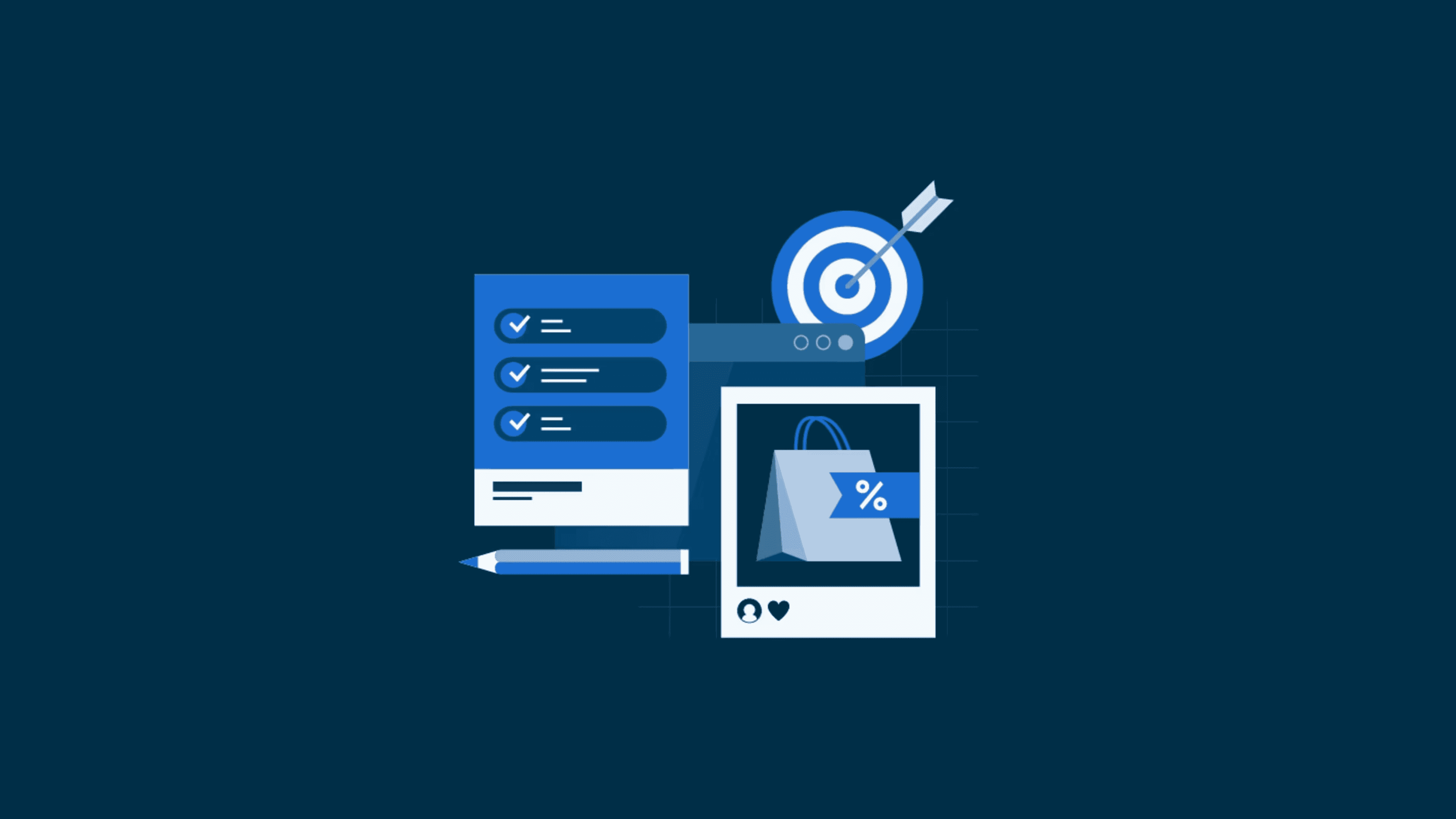
What is Customer Lifetime Value and How to Find It
In business operations today, acquiring new customers is often more expensive than retaining existing ones.When you provide your customers with high-quality products or services, you can earn their trust and build long-lasting relationships with them.This, in turn, can increase the overall customer lifetime value.In this blog, we will explore customer lifetime value in detail, its significance to the customer experience (CX), and how to use it to increase brand loyalty. What is customer lifetime value?Customer lifetime value (CLV) is a metric that businesses use to estimate the total revenue a customer will generate throughout their entire relationship with the company.This metric helps asses the customer’s value over time rather than just focusing on the value of a single purchase.Calculating customer lifetime value can be complicated, involving several factors, such as products, costs, purchase frequency, and volume.However, it can be simplified with the right tools, and strategies can be developed to increase it.How to calculate customer lifetime valueBefore you calculate customer lifetime value, you need to determine the following values.The average customer valueThe average annual number of purchasesThe average retention timeMultiply the three values to find the overall lifetime value. On the other hand, estimating a customer’s expenditure over time could not provide a precise picture.Since many consumers do not find businesses independently, customer lifetime value estimates should account for market research and client acquisition, engagement, and retention costs.Customer valueThis is the average amount of money a customer spends with your business in a given period.The formula to find customer value is:The average value of sales = Total sales/The number of days The Average value of transactions = Sales/TransactionsAverage customer lifespanThis is the average length of time a customer continues to do business with your company.By multiplying these two factors together, you get an estimate of the total revenue a customer can be expected to generate.Customer lifetime value examplesTo calculate CLV, let’s use a potential SaaS business as an example. We’ll show you how to apply the formula and use CLV to target top customers.The pricing structure for subscription-based services is $10, $20, and $30 per month, with an average purchase value as 18.The SaaS company targets middle-aged adults, specifically married individuals aged 35-55, who stay customers for an average of two years and spend an average of $20 per purchase. This is how you calculate the customer profile.The customer lifetime value will be calculated as follows:Now let’s calculate the CLV in example 12. The SaaS company is targeting another young adult customer profile aged 18-30, who typically stay customers for 1.5 years and have an average purchase amount of $30.Now let’s calculate CLV in example 2In conclusion, the middle-aged customer profile has a higher CLV of $960 compared to $810 for younger individuals, indicating that the SaaS business should target this group (the first customer profile).How to increase customer lifetime valueYour organization can increase its revenue by prioritizing CLV and identifying more chances to offer your clients additional value. Here are some strategies to consider.Put the needs of the consumer firstRather than concentrating on goods or profits, a customer-first attitude places the customer’s needs at the heart of business decision-making.Businesses that use a customer-first strategy can consistently provide excellent support at each stage of the customer journey.This can be achieved by:Consistently delivering valueProviding personalized experiences tailored to customer preferencesIncreasing customer satisfactionAdditionally, prioritizing customer needs builds positive word-of-mouth recommendations and referrals, attracting new customers who are likely to show similar loyalty traits, further enhancing the overall customer lifetime value.Enhance your customer onboarding processWhen you have the right customer onboarding processes, you can establish a strong relationship and trust.Providing personalized welcome emails, how-to videos, and ongoing support can educate customers on the value of a product and how to utilize it to its full potential.This investment in onboarding keeps customers engaged and happy, and more likely to become loyal, long-term customers who will spend more with your business.Pay attention to your customersYou’re aware of what your customers say about your brand if you’re proactive and use customer service analytics to track and understand your audience.Are they satisfied with your products or services? Dissatisfied customers tend to voice their complaints, particularly in product evaluations and social media remarks.Show them you’re paying attention, understand their concerns, and are working to find solutions.Gathering direct customer feedback through surveys can assist you in converting customer complaints into opportunities for improving customer service.Elevate the value of your average orderOne effective strategy to increase your customer lifetime value is to raise your average order value.When customers are nearing the completion of their purchases, you have the opportunity to suggest additional products that complement the ones they are already purchasing.By recommending complementary items, you can help boost the overall value of their order and increase the likelihood that they’ll return to make future purchases.Create a loyalty programCreating a customer loyalty program incentivizes repeat purchases and builds a stronger emotional connection between the brand and the customer.Offering rewards, gifts, and exclusive benefits encourages customers to remain loyal, leading to increased retention rates and higher overall spending over the customer’s lifetime.Additionally, loyal customers are more likely to advocate for the brand, attracting new customers through word-of-mouth referrals and further amplifying the impact on customer lifetime value.Businesses should offer incentives to effectively turn high-value customers into brand advocates.A formal referral program can reward customers for bringing in new business, and incentives may include discounts, early access to services, or upgrades.Reach clients with a smooth omnichannel strategyRather than making assumptions about the channels your particular client group prefers, research to find out.Customers become used to utilizing services and goods across multiple platforms and devices without giving channel challenges a second thought.They anticipate that businesses will be reachable across all channels and provide support at all times. Businesses can connect with them on several communication channels, such as community forums, websites, mobile apps, email, or social media.Prevent customer churn through seamless omnichannel support across preferred channels.Invest in customer experienceCustomers are often dissatisfied when their issues are not resolved on time. Consider investing in customer experience tools like customer portal software that allows customers to track and submit tickets through a user-friendly interface easily.An outstanding customer service experience not only pleases your customers but also encourages them to stay loyal to your brand.Build strong long-lasting relationships with customers. Establishing trust is essential for building long-term customer relationships since it requires dedication to continuous engagement and communication.Customers will return if they perceive your company as offering the best prices for the products and services they desire.However, in today’s digital age, customers seek more than just transactional interactions. They desire a personal connection that goes beyond business objectives and fosters a sense of value and importance.This can be achieved by:Staying in touch with customers through personalized contentAsking for customer feedback for improvementReaching out to inactive customersUtilizing customer data platformsBy consistently following these steps, you can deliver exactly what your customers need, thus increasing their customer value.Why is customer lifetime value important?We calculated the average lifetime value of a client for a SaaS company in the previous example. But why is customer lifetime value important to businesses?Here are a few of the main reasons for tracking customer lifetime value.Helps in focusing on who your customers areCompanies may create advertisements targeting high-value clients by categorizing them based on their expected value, behavior, and interests.This focused strategy ensures the efficient use of outreach funds, which allows businesses to invest more to attract clients with better lifetime values.As a result, marketing campaigns are more successful, customers are happier, and long-term profitability rises.Assists in boosting incomeMore consumer spending at your business leads to higher income. Through upselling and cross-selling, companies may use customer data to design product offers for their target market and boost customer lifetime value.When carried out successfully, this boosts your company’s earnings.Assists in targeting the customers you serveCompanies may enhance their outreach initiatives by grouping customers according to their expected value, behavior, and sentiments using customer lifetime value.By using a customer focused strategy, marketing money may be allocated more efficiently and businesses can focus more on gaining high-value clients.Long-term profitability rises, customer happiness rises, and marketing initiatives become more successful.Determines what needs to be improvedBy examining customer lifetime value and associated indicators like average order value, frequency of purchases, customer turnover rate, and total revenue, businesses may get important insights into client relationships.Organizations can use this data to pinpoint areas for development and possible roadblocks in their day-to-day operations.A decline in customer lifetime value (CLV) often indicates issues with the message, customer experience, or product quality.Boost Customer Lifetime Value with Comprehensive CX CollaborationCompanies that determine and study their customer lifetime value have an advantage in forecasting revenue growth and determining the most effective strategies for allocating marketing funds.LIKE.TG is dedicated to helping other businesses generate leads and in supporting them at every turn to convert customers into devoted clients with high customer lifetime values.We use data-driven strategies, real-time information, and omnichannel support to satisfy your customers and build lasting connections with them.Contact us to arrange a live demo and experience how LIKE.TG features can increase customer lifetime value. Or sign up for our free trial for immediate access.I hope you found the article useful. Do you have any more ideas or recommendations? Kindly leave your comments in the section below.

Millennials vs Gen Z: Differences in Customer Service Expectations
Millennials and Gen Z make up the youngest age group in the world. Due to their huge population, they form a significant portion of the consumer market.According to Statista, Millennials and Gen Z alone form about 43% of the US population and, therefore, are a massive driving force in the global market.It is crucial for businesses to understand each generation’s unique needs and expectations to tailor their customer service offerings and improve the customer experience for both groups.In this blog, we look into the different customer service expectations of Millennials and Gen Z, their customer service preferences, and communication styles. Millennials vs Gen Z: Understanding the two generationsYou may wonder how much difference a few years of age can make in your customers’ purchasing habits. While these two generations are separated by only a few years, they have different needs, expectations, and preferences.Who is a Millennial?Millennials or Generation Y are individuals born between 1981 and 1996. This generation was the first to grow up with internet and mobile technology.They are comfortable using technology for communication, learning, and entertainment. Millennials tend to prefer communication through traditional channels like email and phone calls.Who is Gen Z?Generation Z, also known as Zoomers or Post-Millennials, include people born between 1997 and 2012.Unlike Millennials who grew up with technology like cable television and landline phones, alongside the rise of the internet, Generation Z have lived fully connected digitally.They are comfortable using technology for various purposes such as shopping, communication, and entertainment.Zoomers adopted the use of social media and the internet from a very young age. They’re masters of navigating online platforms and absorbing information quickly.Differences between Millennial and Gen Z customersUnderstanding the differences in customer service expectations of Millennials and Gen Z can be a game-changer for your business, especially when it comes to crafting a customer service strategy.Although both Millennials and Gen Z are tech-savvy and digitally fluent, these two generations have distinct preferences and expectations whenever they engage in business with brands.Below are some key differences between Millennials and Gen Z with regard to customer service expectations.Millennials highly value personalized experiencesMillennials appreciate companies that remember their preferences and offer tailored recommendations.They prefer brands convey empathy in customer service interactions and offer real human connections based on understanding. Millennials value when brands make an effort to understand their particular needs and preferences.Gen Z also values personalization but tends to prioritize authenticity and transparency. They are more likely to trust companies that communicate openly and authentically rather than relying solely on personalized marketing tactics.Zoomers not only prefer personalization, but they also prefer brands that share their values, address them by name, remember their birthdays, and are environmentally conscious.Millennials prefer traditional communication channelsAlthough they pioneered numerous types of communication channels such as instant messaging, Millennials tend to prefer traditional communication channels like email and phone calls. Still, they are also comfortable with newer platforms like live chat.Gen Y also uses social media, mostly to go through product reviews and to get product recommendations from friends and family.Gen Z on the other hand, tends to lean heavily toward digital communication platforms, mostly instant messaging apps such as WhatsApp and Telegram. They also rely on social media platforms such as X to contact support staff and share feedback.This younger generation of customers seamlessly switches between communication channels based on the situation.They’re comfortable with live chat support as they grew up with live chat technology in AI-assisted smart devices and services like Siri and Alexa.They can use various digital platforms easily and expect seamless experiences in customer service interactions on all the platforms they use. Zoomers rely on social media for product recommendations and reviews.Millennials value loyalty programsMillennials value customer loyalty programs and therefore prefer brands that offer rewards and benefits. They view loyalty programs as a way to maximize their purchasing power and get rewarded for their brand loyalty.On the contrary, Zoomers prioritize customer experiences over traditional loyalty programs. They would rather return to your business due to a positive customer experience as opposed to being enticed by a loyalty incentive.Gen Z is more generous with private dataGeneration Z values privacy. They are, therefore, sceptical about giving private data to companies unless it is extremely necessary. They tend to trust companies that are transparent about how they collect and utilize their data.Millennials, however, are more flexible with sharing their data as long as they perceive a clear benefit. While privacy is still essential, Gen Z is generally more comfortable sharing data in exchange for personalized recommendations or exclusive offers.Millennial vs Gen Z: Self-service optionsAnother key difference in the Millennial vs Gen Z space is that Gen Z is drawn toward self-service options. They are more likely to search for solutions in online platforms such as YouTube before contacting support staff.They expect clear, intuitive interfaces and prioritize efficiency. If they can’t resolve an issue quickly and easily on their own, they’re more likely to abandon the task altogether.In the Millennial vs Gen Z space, zoomers will explore the knowledge base, conduct online research for solutions, and even participate in peer-to-peer support.Although Millennials don’t mind finding information on their own, they prefer contacting customer support staff via telephone or live chat to solve their customer issues.They value personalized experiences and may appreciate a follow-up from a customer service representative after using self-service.Similarities in customer service expectations of millennials and Gen ZThough these two generations have distinct preferences and expectations, they tend to share some similarities. Below are some of the similarities in customer service that Gen Z and Millennials share:Speed of services: Having grown up in a world of instant gratification, both generations share a strong preference for speedy customer service. They expect fast responses and quick resolution of their issues when interacting with customer service staff.Multi-channel support: Millennials and Gen Z are active users of multiple communication channels, including phone, email, chat, social media, and messaging apps.They expect companies to offer omnichannel support options that allow them to seamlessly reach out for assistance through their preferred channels.Both generations also expect a consistent level of service quality across all channels.Brand engagement: Both Generation Y and Zoomers value opportunities to engage with brands and each other through company events or online community forums. They appreciate companies that listen to their feedback and foster a sense of community and belonging.Self-service options: Both Millennials and Gen Z prefer to have a lot of self-service options available to them to solve various issues independently.They appreciate clear, concise information presented in a user-friendly way. They prefer self-service options that are well-designed and easy to navigate, with readily available solutions.Best practices for customer service: Millennials and Gen ZMillennials and Gen Z are continuously evolving and influencing market trends. Businesses must evolve along with the ever-changing needs of these two generations if they intend to remain competitive.Brands must recognize each generations distinct preferences to meet their growing expectations. Below are some core principles that brands can adopt to fulfil the needs and expectations of Millennials and Gen Z.Personalize customer interactionsBrands need to tailor their customer service offerings to suit the needs of these two generations. To do this, they have to first understand the unique needs and preferences of both Millennials and Gen Z.Brands can do the following to improve their tailored service offerings:Encourage support staff to focus on building genuine connections. They should express customer empathy by listening attentively to customer issues.Empower your customer support teams with customer data, such as past purchases, to enable them to tailor each interaction.Also ensure you add a human touch in all customer service interactions, regardless of the communication channel.Offer omnichannel supportProvide options for customers to reach you via their preferred channel. This can include:PhoneLive chatEmailSocial mediaEnsure a smooth handover between channels by sharing customer history so that customers do not have to repeat information when they switch channels or agents.Also, ensure that your support staff are always active on social media so that they do not miss mentions and can respond to customer requests as soon as possible.Collect customer data regularlyBoth Millennial and Gen Z are continuously evolving and influencing market trends. Collect their customer data and feedback to help you adapt and refine your customer service strategy.Include customer surveys or feedback forms within your customer service applications or websites to gather data on user experience and preferences.Allow customers to choose what data they share and provide an easy way to opt-out or manage their preferences.Respond to customer issues fastBoth Millennials and Gen Z value prompt responses and efficient service. To ensure you meet this expectation, you can do the following:Provide 24/7 customer service support.Train your support staff to resolve issues efficiently on first contact whenever possible.Offer quick communication through live chat or canned responses.Equip your team with the right tools such as modern help desk software to lower first response and resolution times.Harness the power of AI and automation. Use chatbots to answer customer requests promptly.Emphasize on digital communicationOptimize your websites so that they are compatible with all devices, including smartphones. Also ensure that your websites are attractive. Make sure your website, self-service options, and live chat are intuitive and mobile-friendly for a smooth digital experience.Keep an eye on digital trends and adapt to meet user preferences.Offer self-service optionsAccording to research by Gartner, 38% of millennials and Gen Z give up on resolving issues when self-service options fail.It is, therefore, essential to provide self-service options such as comprehensive knowledge bases, wikis, how-to guides, instructional videos, and a customer self-service portal.You can also personalize the self-service experience by suggesting relevant articles, tutorials, or chatbots based on past inquiries and purchase history. Always update your knowledge resources to ensure they reflect any changes in the products or services you offer.Make your brand ethical and environmentally friendlyGeneration Z and Millennials are concerned about the social responsibility of the brands they interact with. Both generations prefer to do business with companies that are ethical and care about the environment.Ensure that your business practices are sustainable, ethical, and environment friendly by:Reducing your carbon footprint by managing the use of electricity.Using environment-friendly products in your business such as reusable bags instead of plastics.Giving back to social causes such as community development projects.Being honest about how you collect and use customer data. Clearly outline your data security policies and offer customers control over their information.Provide the best customer service for Millennials and Gen ZMillennials and Gen Z are the driving force behind today’s consumer trends. Despite differences in customer service expectations, one aspect is shared by both: They want to be heard, and they want you to value their time and care for their individual needs and preferences.To turn these two generations into loyal customers, you should aim to meet their expectations and provide exceptional customer service. Provide speedy responses and convenient communication in all your channels.Empower both millennials and Gen Z in your customer base with self-service options to solve problems on their own.By focusing on these aspects, you’ll meet the expectations of both millennials and Gen Z and build lifelong brand loyalty.Contact us to learn how you can provide exceptional customer service to different customer segments. Book a demo or request a free trial to discover how to meet customer expectations with BoldDesk.We hope this blog was insightful. If you have any additional ideas, feel free to share them in the comments section below.

How to Use Slack for Customer Service Excellence
As customer expectations continue to rise, an integrated and efficient approach to service has become more in demand than ever.Businesses are turning to innovative tools like Slack to meet these expectations and streamline their support operations.Originally created as a platform for team collaboration, Slack has evolved into a valuable tool for customer service, changing the way support teams communicate, collaborate, and resolve issues.This blog delves into the key features and benefits of using Slack for customer service, illustrating how it can revamp your customer support operations and enable you to provide exceptional service in a fiercely competitive market. What is Slack?Slack replaces email with a central hub for instant messaging, file sharing, and integrations with other popular work tools.It is a versatile, cloud-based communication platform widely used by businesses of all sizes to improve productivity and streamline internal communications.Key features of SlackSome of the key features of Slack that make it a powerful tool for communication and collaboration are:Channels: Slack uses channels to organize conversations. Channels can be public within the workspace or private among a select group of team members. They are often organized by team, project, or topic, as suits the organization.Direct messages: Users can send messages directly to one another, creating a private conversation that is not visible to others in the workspace.File sharing: Slack allows users to share files by dragging and dropping them into the app or linking to files stored in other services like Google Drive or Dropbox.Search: Everything in Slack is searchable, which makes it easy to find conversations, decisions, or documents from the past.Integrations: Slack integrates with many third-party services, allowing teams to use external tools within the Slack interface.Notifications: Users can customize their notifications settings to ensure they are alerted about messages and mentions that are relevant to them.Integrating Slack with LIKE.TG for enhanced customer serviceIntegrating Slack with LIKE.TG combines the real-time communication and collaboration strengths of Slack with the robust ticket management and automation features of BoldDesk.Whether it’s handling day-to-day inquiries, resolving complex issues, or gathering customer feedback, LIKE.TG’s Slack integration equips support agents with the tools they need to deliver exceptional service.Be informed instantly:Live ticket alerts: Get notified in Slack whenever a new ticket is submitted, an update is made, or a reply is added. This ensures your team is always in the loop and can respond quickly.Threaded conversations: Conversations stay organized. Slack keeps all ticket communication threaded, providing context within the flow of messages for a smoother workflow.Real-time status tracking: Never miss a beat. Track ticket progress and status updates right within Slack channels.Direct assignee notifications: When assigning a ticket, Slack can directly notify the assignee with all the relevant information, ensuring a smooth handoff.Two-way communication:Respond from Slack: No need to switch back and forth. LIKE.TG’s integration allows you to reply to tickets directly within Slack.Internal discussions: Keep confidential matters private. Add private notes within a ticket on Slack for internal discussions and brainstorming without cluttering the customers’ view.Seamless ticket management: Edit on the fly! Modify ticket details like priority level or status directly within Slack, streamlining your workflow.Customization for optimal workflow:Tailored notifications: Not all notifications are created equal. Set up custom notification settings for individual chats and channels. This allows users to filter updates based on brand, category, or specific areas of interest.Priority alerts: Never miss a critical update. Implement status update alerts to ensure everyone stays informed on high-priority issues, preventing delays and ensuring customer satisfaction.Benefits of using Slack for customer supportA study commissioned by Khoros found that engaging with a customer service representative through online chat proved to be a worthwhile experience for 79% of consumers.Using Slack for customer support offers various advantages that can enhance the efficiency and quality of service provided to customers.Seamless integration with other tools Many third-party applications integrate with Slack, such as CRMs, help desk software, and project management tools. This integration streamlines workflows and ensures that all the necessary information is readily available within the Slack environment.Effortless file sharing Support agents can easily share files, such as screenshots, documents, and guides, directly within Slack. This can help provide visual aids to customers and improve the clarity of support interactions.Real-time communication Slack enables instant messaging, which allows customer support teams to respond to queries and issues in real time, providing a quick and efficient service that can improve customer satisfaction.A survey commissioned by Khoros revealed that nearly two-thirds of American adults who are active online consider a brand’s respect for their time as the most important aspect of a satisfying customer experience.Enhanced collaboration With Slack, support teams can collaborate seamlessly within the platform.Team members can easily discuss issues, share information, and work together to resolve customer problems more effectively.Organized conversations Slack’s channels and threads help keep conversations organized by topic or department. This makes it easier for support teams to track ongoing issues and reference past interactions, leading to more consistent and informed support.Optimized accessibility Slack is accessible across various devices, including smartphones, tablets, and desktop computers, allowing support teams to assist customers from anywhere at any time.Customizable notifications Slack allows users to customize notifications, ensuring that support agents are alerted to high-priority messages or mentions without being overwhelmed by less urgent communications.Efficient knowledge sharing Slack’s searchable history and pinned messages feature make it easy for team members to access and share knowledge. This can help improve the consistency of responses and reduce the time spent searching for information.Streamlined automation Slack supports chatbots and automated workflows, which can handle repetitive tasks, such as triaging support tickets and responding to common questions. This way, agents can focus on complex issues.Limitations of Slack for customer serviceIt is important to note that while Slack can be adapted for customer service, it is not primarily designed for this purpose. Therefore, it may lack some features that are specific to customer service platforms.Lack of a ticketing systemLimitation: Slack does not have a built-in ticketing system to track, prioritize, and assign customer issues.Solution: Integrate Slack with a dedicated customer support or ticketing tool like LIKE.TG to ensure all customer issues are logged and tracked properly.Limited automationLimitation: Slack’s native automation features might be insufficient for complex customer support workflows.Solution: Use Slack’s Workflow Builder for basic automation and consider third-party bots or integrations with customer support automation platforms to handle more advanced tasks.ScalabilityLimitation: As your customer base grows, managing support through Slack can become chaotic and unmanageable.Solution: Set up a dedicated Slack workspace or channel for customer support and consider using Slack in conjunction with a scalable customer support system.Notification overloadLimitation: Slack can generate an overwhelming number of notifications, which can lead to important customer messages being missed.Solution: Customize notification settings, use mention and keyword alerts strategically, and establish clear guidelines on when and how to use notifications for support issues.Lack of formal support metricsLimitation: Slack does not provide native analytics for customer support interactions.Solution: Integrate with analytics tools or customer service platforms that can provide metrics like response time, resolution time, and customer satisfaction scores.Multichannel support challengesLimitation: Slack alone does not facilitate managing customer interactions across multiple channels (email, social media, etc.).Solution: Use an omnichannel customer support platform that can centralize communications from various channels and integrate with Slack for internal notifications and discussions.Enhance customer service with SlackUsing Slack for customer service can enhance communication, collaboration, and efficiency within support teams. By leveraging its real-time messaging, integrations, and automation capabilities, businesses can provide faster and more effective support, leading to higher customer loyalty and satisfaction.Experience unmatched customer service integration on Slack with the LIKE.TG help desk platform. Sign up for a free trial today and see the significant improvement in your support team’s productivity with LIKE.TG. If you have any questions, don’t hesitate to reach out to the LIKE.TG support team. For a customized demonstration of how LIKE.TG can meet your company’s needs, contact us about scheduling a live demo at your convenience.

How to Encourage Knowledge Sharing in the Workplace
Is there open communication among the support teams in your workplace, or do they tend to withhold important information and compete with each other?As an employer, you have probably asked yourself several times how you can provide employees with the tools they require to be successful in their positions and maintain their competitiveness.This can be difficult due to a shortage of human resources, but knowledge sharing can be the solution.You are aware of the proverb: “Sharing is caring.” This is true, especially when it comes to gaining skills or knowledge in the workplace.If employees can openly and efficiently share their knowledge, it’s a win for organizations on many levels.This blog will explore the importance of cultivating a knowledge-sharing culture, its impact on organizational success, and strategies for promoting knowledge sharing within a company. What is knowledge sharing?Knowledge sharing refers to the process by which employees exchange information, insights, experiences, ideas, and expertise within an organization or a community.It is about sharing thoughtful knowledge with team members to understand everyone, solve problems, and learn. As a result, it improves employees’ overall productivity and innovation.Knowledge can be shared through different platforms such as formal training, meetings, documentation, online web tools, informal discussions, and mentorship programs.This becomes the foundation upon which decisions are made accurately.Types of knowledge sharing in a workplace Facilitating knowledge sharing can support the exchange of three types of knowledge. They include:Tacit knowledgeInformation that is not easy to articulate consists of skills or knowledge gained through experiences that are difficult to put into words.For example: How to give a great presentation.Explicit knowledgeIt is easily written down, published, and shared with others.For example: Steps, facts, manuals, and guidelines.Implicit knowledgeOrganization’s processes, practices, and culture. It can be hard to identify and capture, but it can be communicated through shared experiences, beliefs, and cultural practices.For example: Language acquisition or cultural sensitivity.Methods of sharing knowledge in an organizationIn the workplace, information is usually conveyed in a few different ways. They include:Mentorship and coachingIn this relationship, experienced employees provide guidance and support and transfer information to less experienced colleagues. Employees can be mentored, and they can learn by:Frequently making inquiries to their mentorsObserving how the skilled employee worksReceiving adviceGetting feedback on ways to improveFormal training programsThese structured sessions or workshops are designed to convey specific skills, knowledge, or procedures to employees. They include:Online videosManualsHow-to videosInformal conversationsThese consist of everyday discussions between colleagues during which insights, experiences, and information are exchanged casually within the organization.Some examples of such conversations include:Community forumsMobile appsInternal social media and collaboration toolsThese are platforms that enable agents to share information, ask questions, and collaborate on tasks in real-time.They include:Microsoft teamsSocial mediaEffective strategies to encourage knowledge sharingEffective knowledge sharing in the workplace requires the implementation of various approaches. Below are some impactful strategies to encourage knowledge sharing: Create a culture that values knowledge sharingCreating a clear goal and vision for your employees cultivates a growth mindset and nurtures a sense of unity among them.When businesses encourage a knowledge-sharing culture, employees can freely communicate valuable information and ideas across different departments and tasks.This collaborative approach enhances teamwork and lays the groundwork for productive partnership and effective cooperation.Facilitate free and organized knowledge sharingEmployees should exchange information throughout the day and schedule regular check-ins, weekly meetings, and formal knowledge-sharing sessions.This continuous flow of communication builds a collaborative work environment, ensuring everyone is on the same page and can quickly address any issue.When businesses communicate new updates or brand features to employees during scheduled times, it helps those employees understand the information, reduces confusion, and promotes customer engagement.Scheduled communication ensures that employees receive consistent and accurate information critical for maintaining a unified message across the organization.Establish knowledge sharing tools for collaborationEncouraging knowledge sharing is insufficient. Businesses must also offer employees a platform to share their knowledge effectively.Establish a space where employees can collaborate and exchange ideas or skills. This can be achieved by utilizing intranet tools to develop forums, task management systems, mobile apps, or knowledge management software.Using knowledge base software platforms, businesses can:Develop, organize, and handle information for users to easily accessManage company information such as how-to articles, frequently asked questions (FAQs), and manuals that they can share with their customers and support agentsEstablish a centralized hub where information is stored and managed in a structured manner, allowing employees and clients to search for and solve their problems independentlyHave an established procedure for knowledge managementEstablishing a structured knowledge management process is important to ensure that all information collected by employees is accurately documented and stored.Creating a knowledge base will enable agents to access information and translate it into their preferred languages, improving understanding.This will greatly facilitate information retrieval and access, crucial for effective problem-solving.Invest in technologies that facilitate knowledge sharingUse digital platforms like websites, online forums, social media channels, Microsoft Teams, and collaboration tools.They will facilitate the seamless sharing of information, best practices, and lessons learned among employees.McKinsey reports that businesses may increase knowledge worker productivity by 20-25% by utilizing social technology.Additionally, businesses can embrace artificial intelligence tools, such as generative AI Copilot, to facilitate information sharing.These AI tools are useful to employees in the following ways:Generating ideas to provide valuable information while communicatingSimplifying, rephrasing, or condensing informationProviding error-free informationDetecting sentiment or intentIt’s essential to ensure that these platforms are smooth, easily accessible, and designed to encourage active engagement and participation from all users.Acknowledge and reward contributionsRecognize team members who actively share knowledge and offer rewards to them.Show appreciation for their input by presenting awards, praising them during team meetings, or featuring them in company newsletters.Introducing a program for rewarding employees can also foster increased knowledge sharing.This can help employees feel that their ideas are highly appreciated, and it can involve them in the growth of the business.Some of rewards include:PromotionsCertificatesBonusesRecognition programsOffice perks (free meals, snacks, or coffee)DiscountsEducational scholarshipsBusinesses that recognize and appreciate employees’ knowledge and expertise make their employees feel valued and empowered.Acknowledging employees’ contributions fosters a sense of pride and ownership in their work, which can significantly boost morale and job satisfaction.Organize training programs for your employeesImplementing employee training programs effectively distributes knowledge throughout the company, ensuring that all team members have the skills needed to fulfil their roles.These programs promote a collaborative learning environment by offering employees formal opportunities to learn from experts and from one another.Regular training sessions encourage employees to share their skills and experiences more freely by supporting a knowledge sharing culture of professional development and continual improvement.Measure the effectiveness of knowledge sharing strategiesWhen businesses assess the effectiveness of employees’ knowledge sharing, this provides tangible evidence of its impact and underscores its benefits.This data-driven approach fosters a culture of ongoing improvement by identifying areas for development and recognizing successful practices.Moreover, companies should actively promote participation in knowledge-sharing programs by showcasing successful outcomes and commending contributions.Benefits of a knowledge-sharing culture in an organizationMaking knowledge sharing a priority will unquestionably set the stage for long-term growth and achievement. Let’s find out why knowledge sharing is advantageous in workplaces.Increases agents’ satisfaction and retentionA culture that encourages knowledge sharing fosters a sense of belonging, collaboration, and teamwork, leading to higher employee satisfaction and engagement.Employees are more likely to be retained and be loyal to the company when satisfied.Satisfied employees are also more likely to develop a strong emotional connection to their workplace, which can result in increased motivation and a willingness to go above and beyond their roles.Results in higher productivity and efficiencySharing knowledge, tips, and shortcuts can help streamline workflows and improve efficiency.By leveraging existing knowledge and resources, employees can avoid starting from scratch, leading to time and cost savings for the organization.When employees have access to a repository of collective wisdom, they can make more informed decisions quickly and execute tasks more effectively.Having adequate knowledge to share increases productivity, and readily available information increases satisfaction.Enhances agent collaboration and communicationBusinesses enhance communication and collaboration among team members and departments at all organizational levels by implementing a platform for exchanging knowledge and skills.This breaks down silos and encourages collaboration among employees, which can improve the efficiency and effectiveness of business processes.Additionally, by sharing knowledge and expertise with stakeholders, organizations can build strong relationships and improve their ability to work together to achieve common goals.Improves problem-solving skillsAccess to diverse perspectives and experiences helps support teams tackle complex challenges more effectively.Starmind researchers found that 67% of agents and 84% of C-suite executives believe they could have avoided previous errors if they had access to the right knowledge.Knowledge sharing encourages creative problem-solving approaches and identifies improvement solutions.When employees have skills, it becomes easier for them to deliver good customer service experience.Accelerates learning and developmentKnowledge sharing is essential to fostering continuous learning and skill development among employees.When employees tap into their colleagues’ collective expertise, they can quickly acquire new skills, learn best practices, and gain valuable industry insights.A centralized knowledge management system and articles created and managed within the company can serve as valuable employee references, aiding their onboarding processes and contributing to their ongoing learning and development.Reduces operational costsKnowledge sharing culture can result in extensive cost reduction and improved operational effectiveness.Utilizing employees’ knowledge through organization content creation can reduce the need for expensive third-party training.Companies can save significant amounts of money by implementing internal knowledge sharing, especially through employee-generated learning.This allows employees to create courses for their team members, reducing turnover rates and saving the company costs associated with recruiting, hiring, and training new staff.Barriers to knowledge sharing in the workplaceThe following are the most typical obstacles that prevent knowledge exchange in an organization:Knowledge hoardingIn the workplace, some employees tend to be introverted and often remain silent, choosing not to share information with their team members.Consequently, companies struggle to access important information these employees keep to themselves.When many people in a company hold onto knowledge, it might be because of the:Cultural barriersLack of supportMisaligned incentivesKnowledge silosThese are barriers within organizations that prevent effective sharing of information across departments or teams.Businesses face danger from knowledge silos because the silos divide departments into different groupings.They arise from:Hierarchical structuresCultural normsTechnological constraintsThese silos may hinder productivity, problem-solving, innovation, and communication.Inadequate opportunityRemote work has introduced a new knowledge-sharing obstacle because of reduced social interaction.In the past, employees had opportunities to socialize and share information in informal and formal settings.However, with the rise of the digital era, more team members are working remotely, resulting in fewer natural interactions and social exchanges and less open knowledge sharing.Lack of awarenessA company must ensure that all employees understand how to access information and resources for knowledge management.If the message is unclear, team members may not know when or why to use these resources, which can lead to a slow adoption of knowledge-sharing practices.Empower employees with a knowledge sharing cultureA knowledge sharing culture is the foundation of organizational success, driving collaboration, innovation, and continuous learning.By fostering an environment where employees feel empowered to share their expertise and insights, companies can unlock the full potential of their workforce.Implementing effective tools, creating incentives, and overcoming common barriers are essential strategies to cultivate a culture of knowledge sharing.Organizations that prioritize knowledge-sharing culture enhance efficiency and problem-solving capabilities and boost employee engagement and retention rates.Contact us to arrange a live demo and experience how LIKE.TG features can help you implement a knowledge-sharing culture. You can also sign up for our free trial for more information.I hope you found the article useful. Do you have any ideas or recommendations? Kindly leave your comments in the section below.Related articles Internal Customer Service: Definition and Best PracticesKnowledge Management System: Examples and Effective GuidelinesHow to Create a Knowledge Base in 7 Easy Steps

Freshdesk vs Zendesk: Which Customer Support Platform Is Right for Your Business?
A robust customer support platform can be the foundation of your strategy, helping you manage inquiries, streamline workflows, and maintain high levels of customer satisfaction.Two of the leading contenders in this space are Freshdesk and Zendesk, each offering a suite of powerful features designed to enhance your support operations.Whether you’re a small startup looking for a cost-effective solution or a large enterprise needing advanced capabilities, choosing the right platform is key. Freshdesk and Zendesk both come with their own unique strengths and can cater to different business needs.Join us as we delve into the specifics of Freshdesk vs Zendesk, examining what sets them apart and which one might be the perfect fit for your customer service strategy. Comparison of Freshdesk and ZendeskBelow is a comparative table between Freshdesk and Zendesk focusing on several key aspects of each platform:FeatureFreshdeskZendeskCore functionalityHelpdesk software with ticketing system, knowledge base, social media, and chat.Helpdesk software with ticketing system, live chat, call center software, and knowledge base.User interfaceUser-friendly with a modern, intuitive design.Clean, streamlined interface that can be more complex due to extensive features.CustomizationHigh level of customization options for ticketing.Extensive customization options available for ticketing and workflows.AutomationRobust automation for ticket routing, scenario automation, and time-triggered actions.Powerful automation with triggers, automation, and macros for ticket handling.Reporting and analyticsAdvanced reporting suite with customizable reports and dashboards.Comprehensive analytics and reporting features with custom report creation.IntegrationsOffers a marketplace with a variety of integrations including CRM, e-commerce, and productivity tools.Extensive integration options through the Zendesk Marketplace, including CRM, e-commerce, and more.Customer support channelsEmail, phone, chat, social media, and a knowledge base.Email, phone, chat, social media, a knowledge base, and community forums.PriceOffers several tiers, including a free plan for basic needs and advanced paid plans.Multiple tiered pricing plans, generally considered to be at a higher cost than Freshdesk, no free plan for businesses (only a trial).ScalabilitySuitable for businesses of all sizes, from small to large enterprises.Highly scalable, designed to accommodate small businesses to large enterprises.SecurityOffers standard security features such as SSL, data encryption, and compliance with industry standards.Advanced security features and compliance with multiple industry standards, plus additional security packages.Trial periodFree trial available for paid plans.Free trial available for all plans.Freshdesk vs Zendesk OverviewHere’s an overview of Freshdesk and Zendesk:Freshdesk, created by Freshworks Inc., is cloud-based customer support software offering a range of tools to enhance the efficiency of customer service operations.It features a unified ticketing system for various channels like email, chat, social media, and phone. The software streamlines support tasks with automated workflows for ticket routing and SLA management, and it includes a knowledge base for article creation and sharing.Customizable and capable of integrating with other apps, Freshdesk’s intuitive and scalable platform serves businesses of all sizes.Zendesk is a global customer service software company. Its main product is a cloud-hosted support platform that empowers companies to enhance customer service.The platform includes Zendesk Support, a ticketing system for managing and addressing customer inquiries through various communication channels such as email, chat, social media, and phone.Additional offerings from Zendesk include live messaging with Zendesk Chat, self-service resources through Zendesk Guide, call center features via Zendesk Talk, and data analysis with Zendesk Explore.Designed for flexibility and scalability, Zendesk’s products serve a diverse array of businesses, from small startups to large corporations.Freshdesk vs Zendesk pricingWhen comparing Freshdesk and Zendesk, pricing is a crucial factor to consider. Both platforms offer tiered pricing models to cater to different business sizes and requirements.Here’s a detailed look at Freshdesk vs Zendesk pricing structures:Freshdesk pricingFreshdesk offers several pricing tiers, including a free plan and paid plans that increase with features and capabilities.Free:Ideal for small teams or startups.Basic ticketing, email support, and a knowledge base.Limited to a small number of agents.Growth:Starts at $15 per agent per month (billed annually).Adds automation, collision detection, and more sophisticated reporting.Includes social media integration and time tracking.Pro:Starts at $49 per agent per month (billed annually).Introduces advanced features such as custom roles, satisfaction surveys, and multilingual support.Integration with CRM and other third-party applications.Enterprise:Starts at $79 per agent, per month (billed annually).Offers advanced functionalities like custom bots, IP allowlisting, and HIPAA compliance.Includes advanced analytics, a sandbox environment, and a dedicated account manager.Zendesk pricingZendesk also provides several pricing tiers with a focus on more advanced features at higher levels.Zendesk support pricing planFor smaller businesses:Support Team:Starts at $19 per agent per month (billed annually).Basic ticketing system, email, and social media support.Essential reporting and customer interaction history.Support Professional:Starts at $55 per agent per month (billed annually).Includes advanced features like CSAT surveys and performance dashboards.Multilingual support and more extensive integrations.Support Enterprise:Starts at $115 per agent per month (billed annually).Offers enterprise-grade features like custom roles.Advanced security features, including advanced data privacy and protection add-on.Zendesk suite pricing plansFor larger businesses:Suite Team:Starts at $55 per agent per month (billed annually).Prebuilt analytics dashboards.Workforce management add-onSuite Growth:Starts at $89 per agent per month (billed annually).Quality assurance add-on.Self-service customer portal.Suite Professional:Starts at $115 per agent per month (billed annually).HIPAA enabled.Eligible for Advanced AI add-on.Suite EnterpriseContact Zendesk for pricing.Customizable workspaces for agents.Advanced sandboxing and testing capabilities.Additional costs and considerationsAdd-ons and integrations: Both Freshdesk and Zendesk offer a variety of add-ons and integrations that can incur additional costs. These can include advanced analytics, AI-powered tools, and additional storage.Customization: Extensive customization may require additional development resources or professional services, which can impact overall costs.Annual vs monthly billing: Both platforms offer discounts for annual billing, which can provide significant savings compared to month-to-month plans.SummaryHere’s a table summarizing the key pricing points.FeatureFreshdeskZendeskFree planAvailable (limited features)Not availablePricing modelPer agent, per monthPer agent, per monthStarting price$15 per agent (billed annually)$19 per agent (billed annually)Value focusAffordability for smaller teamsComprehensive features for larger teamsFreshdesk is generally more affordable, especially for small to medium-sized businesses or those just starting out. Its free plan and lower entry-level pricing make it accessible, while higher tiers offer advanced features for growing businesses.Zendesk tends to be more expensive but justifies the cost with extensive features and capabilities particularly suited for larger enterprises with complex support needs. Its advanced tiers provide robust tools for managing large-scale support operations.Freshdesk vs Zendesk: What do they offer?Choosing the right customer service software is about finding the perfect blend of features to meet your needs. Here’s a head-to-head comparison of Freshdesk and Zendesk’s core offerings:Ticketing system (core functionality)Both: Freshdesk and Zendesk offer robust ticketing systems for managing customer inquiries. These include features like ticket creation, assignment, prioritization, internal notes, and communication history.Freshdesk is known for its user-friendly interface and intuitive ticketing experience.Zendesk offers advanced ticketing functionality, like ticket macros, custom fields, and advanced reporting (in higher tiers).Self-service portalBoth: Empower your customers with self-service options. Both platforms allow you to create a knowledge base with articles, FAQs, and downloadable resources.Freshdesk provides a basic knowledge-base builder.Zendesk offers a more robust knowledge base solution with features like article categorization, search functionality, and analytics (in higher tiers).Multi-channel supportFreshdesk offers multichannel support (email, social media) in paid plans.Zendesk includes multichannel support (email, social media, live chat) in most paid plans. Higher tiers offer additional channels like telephony and community forums.AutomationBoth automate repetitive tasks to streamline workflow. Both offer features like automated ticket routing, canned responses, and basic workflow automation.Zendesk provides more advanced automation functionalities through triggers and custom workflows (in higher tiers).Reporting and analyticsBoth track performance and gain insights with reporting tools.Freshdesk offers basic reporting on key metrics like agent performance and ticket resolution times.Zendesk provides more comprehensive reporting and analytics dashboards with deeper insights (in higher tiers).Artificial Intelligence (AI)Freshdesk offers basic AI functionalities and automation capabilities.Zendesk provides advanced AI features, including chatbots, sentiment analysis, and smart ticketing for improved customer experience (in higher tiers).Freshdesk vs Zendesk: reviewBoth Freshdesk and Zendesk are popular customer service platforms with a strong presence on review sites like Capterra and G2.Here’s a breakdown of how they fare based on user reviews:FreshdeskCapterra: Freshdesk receives a user rating of 5 stars out of 5 on Capterra. Users praise its ease of use, affordability, and intuitive interface. However, some reviewers mention limitations in advanced features and automation capabilities compared to Zendesk.G2: Freshdesk scores 4 stars out of 5 on G2. Similar to Capterra, reviewers highlight Freshdesk’s user-friendliness and value. Some G2 reviews mention occasional limitations in reporting and customization options.ZendeskCapterra: Zendesk has a user rating of 4 stars out of 5 on Capterra. Users commend its comprehensive feature set, powerful integrations, and scalability. However, some reviewers mention Zendesk’s pricing can be expensive for smaller teams, and the interface can be complex for beginners.G2: Zendesk scores 3 stars out of 5 on G2. Users value Zendesk’s robust functionalities, customization options, and AI capabilities. Some G2 reviews mention a steeper learning curve compared to Freshdesk and occasional concerns about customer support quality.Freshdesk vs. Zendesk: What about customer support?When comparing Freshdesk and Zendesk, the quality and availability of customer support are critical factors to consider.Both platforms are known for providing comprehensive support to their users, but there are some differences in their offerings. Here’s a look at the customer support provided by Freshdesk and Zendesk:Freshdesk customer supportSupport channelsEmail support: Available 24/7 across all plans.Phone support: Available in higher-tier plans.Live chat: Available in higher-tier plans.Community forums: Access to peer support and community discussions.Self-service resourcesKnowledge base: Extensive library of articles, guides, and FAQs.Video tutorials: Step-by-step video guides to help users navigate the platform.Webinars: Regular webinars on various topics related to customer support and product usage.Onboarding and trainingDetailed onboarding process with setup guides and tutorials.Training sessions available for teams to get up to speed with the platform.Zendesk customer supportSupport channelsEmail support: Available 24/7 for all plans.Phone support: Available 24/7 depending on the plan.Live chat support: Available for higher-tier plans.Social media support: Support via X and other social media platforms.Self-service resources:Knowledge base: Comprehensive collection of help articles, guides, and FAQs.Zendesk help center: Centralized portal for self-service support resources.Community forums: Engage with other users and share best practices.Developer portal: Resources for developers, including API documentation and SDKs.Onboarding and trainingExtensive onboarding resources including setup guides and product walk-throughs.Training programs and certification courses available for users and administrators.Access to Zendesk’s training portal for self-paced learning.SummaryFreshdesk offers solid customer support with 24/7 email support for all plans and additional channels like phone and chat for higher tiers. It provides extensive self-service resources, onboarding, and training, making it accessible for small to medium-sized businesses. The presence of a dedicated account manager for enterprise plans adds a layer of personalized support.Zendesk provides robust customer support with 24/7 availability across multiple channels, including email, phone, and social media. Its comprehensive self-service resources, extensive training programs, and developer portal make it suitable for larger enterprises. The inclusion of a dedicated account manager and proactive customer success programs for higher-tier plans ensure tailored support for complex needs.Freshdesk vs Zendesk: StrengthsWhen compared, Freshdesk and Zendesk stand out in the customer support software market for their robust feature sets and capabilities.However, each has its own strengths and may be better suited to different types of businesses and needs. Here’s a detailed comparison of Freshdesk and Zendesk, highlighting their strengths.FreshdeskUser-friendly interface: Freshdesk is known for its intuitive and clean user interface, making it easy for new users to get up to speed quickly.Affordability: Freshdesk is generally more cost-effective, with competitive pricing plans and a free tier, making it accessible for small to medium-sized businesses.Comprehensive features: Robust ticketing system with automation, collision detection, and multi-channel support (email, phone, chat, social media). Collaboration tools like Team Huddle and Shared Ownership facilitate internal communication and teamwork.Scalability: Offers a range of plans that can scale with your business as it grows, from small teams to larger enterprises.Customer support: 24/7 email support across all plans, with additional phone and chat support in higher-tier plans. Dedicated account managers and priority support for enterprise plans.ZendeskComprehensive and advanced features: Advanced ticketing system with macros, triggers, and extensive automation rules. Multichannel support includes messaging apps and social media, with a unified agent workspace.Customization and scalability: Highly customizable workflows, roles, and permissions, making it suitable for large enterprises with complex needs.Advanced analytics and reporting: Deep analytics capabilities with Zendesk Explore, offering real-time dashboards and customizable reports.Customer support: 24/7 support through multiple channels (email, phone, chat) depending on the plan. Dedicated account managers and extensive training resources for higher-tier plans.Enterprise-grade security: Advanced security features including single sign-on (SSO), data encryption, and compliance with regulations like HIPAA and GDPR.Why is LIKE.TG more suitable than Freshdesk and Zendesk?LIKE.TG is a relatively new player in the customer service software market, and it positions itself as a competitive alternative to established platforms like Freshdesk and Zendesk.There are several reasons why some organizations might consider LIKE.TG to be a preferable solution:Comprehensive and advanced featuresLIKE.TG offers a range of features designed to streamline customer support operations and enhance overall user experience. Here’s a detailed look at the key features of LIKE.TG:Ticket management: LIKE.TG allows you to create, assign, track, and manage tickets throughout their lifecycle. It provides tools to categorize, prioritize, and filter tickets, ensuring that support requests are handled promptly and effectively.Multichannel support: The system can centralize tickets from various communication channels such as email, chat, phone calls, and social media, providing a unified platform for managing all customer interactions.Automation and workflows: LIKE.TG enables you to set up automated workflows to perform routine tasks, such as assigning tickets to the appropriate team or individual based on predefined rules, sending automated responses, and escalating tickets when necessary.Artificial Intelligence (AI): LIKE.TG enables companies to utilize artificial intelligence for customer service tasks, including translating, rephrasing, and shortening text within tickets and knowledge base articles. This capability enables your teams to provide better responses and information.Knowledge base: A self-service knowledge base allows customers to find answers to common questions without needing to contact support. This reduces the volume of support tickets and empowers customers to resolve issues independently.Reporting and analytics: The software comes with built-in reporting and analytics tools that offer insights into support operations, customer satisfaction, agent performance, and ticket trends. This data can identify areas for improvement and allow you to make informed decisions.Collaboration tools: Features like internal notes, ticket sharing, and group assignments allow support teams to collaborate effectively and resolve issues efficiently.Extensive customization options: LIKE.TG offers customizable ticket forms, templates, and branding options to tailor the support experience to the organization’s needs and maintain brand consistency.Smooth integrations: The system can integrate with other business tools and platforms, such as CRM systems, live chat software, and third-party applications to streamline operations and provide a comprehensive view of customer interactions.Mobile app: A mobile application allows agents to access and manage tickets on the go, ensuring that customer support is not limited to the desktop environment.SLA management: Service level agreements (SLAs) can be defined and monitored to ensure timely responses and resolutions, helping to maintain a high level of customer satisfaction.Customer feedback and surveys: LIKE.TG includes features to collect customer feedback and conduct surveys, which can be used to gauge customer satisfaction and improve service quality.User-friendly interface: LIKE.TG offers a clean, modern, and easy-to-navigate interface, reducing the learning curve for new users and ensuring a smoother onboarding process.Security and compliance: The platform typically offers robust security measures to protect sensitive data and ensure compliance with relevant regulations and standards.Competitive pricingLIKE.TG offers a variety of pricing plans to cater to different business needs and budgets. Here’s an overview of LIKE.TG’s pricing structure:Agent-based plansIdeal for teams with a specific number of agents.Pay per agent, with a base price for a minimum number of agents (typically three).Plans include:Scale ($25/month, billed annually): Ideal for small and medium businesses, it includes three agents, email ticketing, knowledge base, workflow automation, canned responses, and various customization options. Additional agents cost $15/month each.Growth ($50/month, billed annually): Includes all features from Scale plan, plus live chat, WhatsApp support, CSAT surveys, agent signature, ticket auto-assignment, and more advanced features. Additional agents cost $32/month each.Enterprise ($75/month, billed annually): All features from Growth plan, plus multibrand capabilities for help desk and knowledge base, ticket approvals, activity/task management, agent shifts, and access to the AI Copilot (beta) add-on. Additional agents cost $48/month each.Unlimited agents plansPerfect for businesses with a fluctuating number of agents or expecting significant growth.Pay a flat monthly fee regardless of the number of agents.Plans include:Essential ($799/month, $9,588 billed annually): Ideal for small and medium businesses. Includes core features like email ticketing, knowledge base, workflow automation, and 12,000 tickets per year.Pro ($1,499/month, $17,988 billed annually): Suitable for businesses needing more advanced features and higher ticket volume. All Essential features, plus CSAT surveys, multilingual support, AI add-on (beta), and 30,000 tickets per year.Business (custom pricing, contact LIKE.TG for details): Designed for larger enterprises with complex needs. All Pro features, plus multibrand capabilities, activity/task management, and 120,000 tickets per year.SummaryLIKE.TG offers a free 15-day trial with no credit card required and a 30-day money-back guarantee.LIKE.TG also offers a free AI Copilot add-on (currently in beta) that provides features like autogenerating ticket responses, SEO title recommendations, and summarizing tickets and articles.LIKE.TG also has a free program for qualifying startups, providing 10 Growth plan agents at no charge for the first year.LIKE.TG’s pricing is designed to be competitive and flexible, making it an attractive option for small to medium-sized businesses as well as larger enterprises. The tiered plans ensure that you can choose the level of functionality and support that best fits your business needs and budget.Whether you need basic ticket management and automation or advanced customizations and integrations, LIKE.TG has a plan to suit your requirements. Contact our support team or arrange a live demo to witness the outstanding customer service software that LIKE.TG offers.Freshdesk and Zendesk FAQWhat are the main differences between Freshdesk and Zendesk?Freshdesk is known for its user-friendly interface, affordability, and robust feature set suitable for small- to medium-sized businesses. It offers comprehensive multi-channel support, automation, and collaboration tools.Zendesk, on the other hand, excels in scalability, advanced features, and extensive customization options, making it ideal for larger enterprises. Zendesk provides more complex analytics and a broader range of integrations.Which platform offers better pricing options?Freshdesk generally offers more affordable pricing plans, starting with a free tier for basic features and scaling up to $79 per agent per month for enterprise-level capabilities.Zendesk’s pricing starts at $19 per agent per month and can go up to $199 per agent per month for elite features. The higher cost of Zendesk reflects its advanced features and scalability.How do the ticketing systems of Freshdesk and Zendesk compare?Both Freshdesk and Zendesk provide robust ticketing systems. Freshdesk offers features like automation, collision detection, and multi-channel support.Zendesk offers advanced ticketing with macros, triggers, intelligent routing, and detailed ticket forms, making it more suitable for complex workflows.Can both platforms handle multichannel support?Yes, both Freshdesk and Zendesk handle multichannel support. Freshdesk supports email, phone, chat, social media, and website inquiries in a unified platform.Zendesk also supports these channels and adds messaging apps like WhatsApp, providing a more integrated agent workspace.Which platform should small businesses choose?Small- to medium-sized businesses might find Freshdesk more suitable due to its affordability, ease of use, and comprehensive feature set that covers all essential customer support needs.Which platform is better for large enterprises?Large enterprises with complex support needing advanced features, extensive customization, and deep analytics might prefer Zendesk despite its higher cost and steeper learning curve.Freshdesk vs Zendesk: Choosing the right customer service toolUltimately, the choice between Freshdesk and Zendesk will depend on your specific business requirements, budget, and the complexity of your support operations. Both platforms offer powerful tools to enhance customer service, but they cater to different organizational needs and scales.LIKE.TG stands out as a compelling alternative to Freshdesk and Zendesk, especially for businesses looking for an affordable, user-friendly, and reliable customer support solution.Explore LIKE.TG’s website to see its offerings and its dedication to customer satisfaction.

Integrating LIKE.TG with Zapier for Streamlined Customer Service
In an age where customer expectations are at an all-time high, the pressure is on customer facing teams to fine-tune their support operations and deliver swift, personalized, and impactful service.To deliver a seamless customer experience, they must juggle a toolbox of different productivity tools for ticketing, communication, knowledge sharing and so on. However, managing all these apps can be a time-consuming nightmare.The key to enhancing efficiency lies in integrating these applications to transform disjointed systems into a unified support hub.LIKE.TG integrates with Zapier, an efficient automation tool, to enable teams to reduce manual effort, minimize errors, and accelerate response times.Join us as we explore the ins and outs of integrating LIKE.TG with Zapier, illustrating how you can leverage these tools to optimize your customer support operations and take your service delivery to the next level. What is Zapier?Zapier is a web-based automation tool that automates related tasks between different software applications. It lets you build automated workflows called ‘Zaps’ that create a wide range of automations, from simple one-step actions to complex, dynamic workflows.Zaps are triggered by specific events in one app and then automatically perform actions in another.For example, an event such as ticket creation can automate actions like creating a new task in a project management tool or sending email notifications.This way, you can streamline your workflow and save time by automating repetitive tasks.The capabilities of LIKE.TG and Zapier integrationLIKE.TG is a powerful help desk software that allows you to organize support requests, automate tasks, and collaborate seamlessly with your team- all from a single, user-friendly platform.With Zapier, you can integrate LIKE.TG with 3,000+ of the web’s top tools to automate your help desk workflows and stay on top of customer requests.Here’s what you can do with this robust integration:Automate workflowsYou can easily create Zaps that trigger actions in other apps based on events that occur in BoldDesk.This means you can set up a process where, for example, a new ticket in LIKE.TG could automatically create a task in a project management tool like Trello or Asana.Conduct two-way data syncingThe LIKE.TG and Zapier integration supports syncing data across various ticketing modules with other applications.Any update made in LIKE.TG is automatically reflected in other tools and vice versa, ensuring you have a unified solution that is always up to date.Connect with unlimited online productivity toolsLIKE.TG can be integrated with over 3,000 apps available on the web via Zapier, expanding the possibilities for improved automation and efficiency.Zero coding integrationsZapier allows LIKE.TG to integrate with other tools without additional coding, making it accessible for all users, regardless of their level of technical expertise.Ready to use templates for quick automationZapier offers saved Zaps that allow users to quickly automate common LIKE.TG integrations, such as getting Microsoft Teams notifications for new LIKE.TG tickets or creating Jira issues from new LIKE.TG tickets.LIKE.TG and Zapier integration templatesA disorganized assortment of productivity tools can hinder your customer service operations. To streamline your workflow and save valuable time, adopt the following pre-built Zaps.Send instant notifications and messages for ticket activityWhenever a new ticket is created, updated, or replied to in LIKE.TG, the following Zaps deliver the notification and the ticket’s message to the specified Slack, Teams, Zoho Cliq, WhatsApp, or Telegram channels.This way, your customer service team benefits from real-time updates, ensuring they can respond to inquiries efficiently, regardless of the customer communication channels they use.This immediate flow of information improves the team’s ability to troubleshoot issues and provide timely assistance and demonstrates your commitment to swift and attentive service.Foster team collaborationThe LIKE.TG and Zapier integration ensures that cross-functional teams are always in sync, leading to quicker response times, coordinated resolutions, and improved productivity.For instance, the LIKE.TG + Jira Zap creates a LIKE.TG ticket whenever a new issue is created in Jira, and vice versa. It also automatically updates the tickets and issues with subsequent changes to ensure you are always in the loop.On the other hand, the LIKE.TG+ ClickUp Zap ensures every customer issue captured in LIKE.TG instantly translates into actionable tasks in ClickUp, keeping your support process aligned and efficient.Streamline your document signing processThe LIKE.TG+ BoldSign workflow streamlines your business processes by ensuring no declined signature request goes unnoticed. Whenever a signature request from BoldSign is declined, it instantly generates a LIKE.TG ticket, so your team is immediately alerted to follow up.This proactive customer service approach quickly addresses client concerns or objections and maintains the momentum of your document signing processes.Get notifications for each digital paymentThe LIKE.TG+ M2p Zap bridges the gap between digital payment processing and customer service management.This workflow triggers the creation of a new LIKE.TG support ticket the moment a specified event occurs within the M2P system, allowing businesses to acknowledge and track payment transactions swiftly.It ensures that every payment event is captured without fail, fostering a more organized payment system and responsive support structure.Conveniently create LIKE.TG tickets via voice commandsThe innovative LIKE.TG+ Alexa Zap harnesses the power of voice technology to streamline the customer support process, offering unparalleled convenience and efficiency.By simply voicing your chosen trigger phrase to your Amazon Alexa device, you can initiate the creation of a support ticket in LIKE.TG, without the need to type or navigate through a user interface.It not only saves precious time for users who require support but also allows them to seek help hands-free, which can be particularly beneficial in situations where they cannot use a keyboard or screen.Enhance financial management and invoicingThe BolDesk + Invoice Ninja Zap integrates Invoice Ninja, a financial management tool, with BoldDesk. It automates the creation of a new client in Invoice Ninja whenever a new contact is added in BoldDesk.This workflow reduces the potential for human error, enhances operational productivity, and ensures that the enterprise’s financial health is managed precisely and easily.Efficiently track and follow up on potential clientsSwiftly engaging with prospects is crucial for driving growth and maintaining a competitive edge. With the seamless integration of Facebook Lead Ads and LIKE.TG, businesses can capitalize on this strategic advantage.This workflow ensures that every new lead is instantly captured as a new contact in LIKE.TG, streamlining the process of turning prospects into valuable customers.Benefits of integrating LIKE.TG with ZapierWhile LIKE.TG possesses in-built automation features, coupling it with Zapier broadens its reach to many additional tools, unlocking unlimited automation possibilities that streamline operations and boost efficiency.Here’s a breakdown of some of the key advantages of this integration:Improved agent productivityIntegrating LIKE.TG with Zapier fosters a more centralized, engaging, and fulfilling work environment that reduces agent effort and boosts productivity.Customer inquiries automatically trigger ticket creation, complete with relevant details pre-populated. This eliminates tedious data entry and allows agents to jump right into understanding and addressing customer concerns.Zapier automates repetitive tasks beyond ticket creation. It can send automated acknowledgement emails upon ticket creation, route inquiries to the appropriate agent, or trigger notifications to other departments for faster resolution.Such automations free agents from these administrative routines so they can focus on what truly matters: personalized interactions, complex problem-solving, and building positive customer relationships.Faster resolution timesWhen you combine LIKE.TG’s ticketing power with Zapier’s automation capabilities, you can significantly increase ticket resolution times.Imagine a customer submitting a ticket about a billing issue. Traditionally, an agent would need to manually create the ticket, identify the relevant department, and potentially wait for that team’s response.With Zapier in the mix, the ticket creation triggers an immediate action. It automatically routes the ticket to the appropriate agent in the billing department, sends them a notification via Slack or email, and even pre-populates the ticket with relevant customer data.This eliminates delays, gets the right people involved from the get-go, and leads to a quicker turnaround time for each ticket.Enhanced customer experienceIntegrating LIKE.TG with Zapier gives you access to hundreds of other customer service tools, paving the way for a smoother customer journey.Imagine a customer reaching out with a question. Zapier can automatically pull up their past purchase history and service interactions within LIKE.TG, giving the assigned agent a holistic view of the customer issue.This allows for a personalized engagement and a targeted approach to resolving the issue.Streamlined workflows and data flowThe ability to connect LIKE.TG with other tools through Zapier means that customer profiles can be synchronized across platforms in real-time.For example, if a customer interaction starts on a different channel, such as a social media platform, Zapier can create a corresponding ticket in LIKE.TG, ensuring that all communication is centralized and accessible to the support team.This coordinated approach to customer support improves customer data management, eliminates information silos, and ensures that agents have all the needed context to resolve issues effectively.Yields actionable insightsZapier integrates LIKE.TG with customer survey tools that allow you to automatically solicit customer feedback after each interaction.Besides, you can leverage a series of analytics tools to analyze customer service metrics like ticket volume by channel, response times, agent performance, and even customer sentiment within tickets.By stitching together customer intelligence from various sources, you can gain a clear understanding of your customer base, identify trends, pinpoint areas for improvement, personalize future interactions, and ultimately, craft a customer experience strategy that truly resonates with your audience.Leverage the power of LIKE.TG + Zapier for effortless customer supportZapier enhances LIKE.TG to more effectively connect the dots within your customer service ecosystem, increase efficiency, reduce errors, and ensure that your customer service meets the growing expectations of customers with minimal effort.Ready to Zap your way to better customer support?Sign up for a free trial or book a live demo to discover the endless automation possibilities of LIKE.TG’s integration with Zapier.Please contact the LIKE.TG support team with any questions you may have.

Standard Operating Procedures: Definition and How to Write Them
Companies regularly carry out tasks or processes as part of their routines to ensure consistency and efficiency in their operations.Therefore, it is appropriate to establish quality standard operating procedures (SOPs) that clearly outline the necessary steps and guidelines to carry out these tasks.In this blog, we’ll explore why standard operating procedures are important and how to create, implement, and maintain them effectively. What are standard operating procedures?Standard operating procedures are a set of instructions that outline how a routine task or process should be done within an organization.It’s like a recipe for regularly getting the desired outcome, such as producing a widget, handling customer service experience inquiries, or following safety regulations.The procedures can be employed in various areas, including employee training manuals, performance reviews, and checklists of safety procedures.A well-written standard operating procedure defines routine workflows and tasks, leading to consistent and efficient organizational operations.Common standard operating procedure formatsThere are a few different formats to choose from when developing a well-structured SOP document.The checklist formatThis method usually consists of an established set of steps listed in an order users must follow. For this case, you can utilize certain business process automation (BPA) technologies.Checklist – Before publishing a blog☒Blog title length is 6-7 words long (maximum 70 characters)☐Blog title includes the focus key phrase☐Blog title includes the platform name☐Blog sub-headings have the key phrase☐Focus key phrase is used in the first paragraph (within the first 150 words)☐Key phrase is included in the blog description☐Meta description displays a green indicator under the Rank Math plugin (Should be 150-160 characters)☐Slug length is within the provided limit☐The blog author has a valid profile and a LinkedIn profile.☐Added 3-8 links to authoritative websites☐All the links in the blog have the title attribute☐Links are not added directly but are embedded into the keywords.☐ Enabled no-follow for competitor links in the blog.☐Kept each sentence under 20 words.☐Each paragraph stays within 120 words.You can easily modify and update checklists as procedures evolve or new information becomes available. Their simplicity makes them easy to change.Hierarchical formatHierarchical standard operating procedures offer detailed guidance at each step of a process, including substeps that can be labeled like 2a, 2b, 2c, etc.They are utilized when additional instructions are necessary for completing a particular task, such as logging in with a username and password.This approach simplifies complex procedures with many elaborate steps by breaking them into smaller, more manageable components. As a result, it’s easier for employees to follow and execute specific job instructions.Flowchart or diagram formatFlowcharts and diagrams are frequently used in standard operating procedures to illustrate logical stages with if-than branches, such as escalated issues or directing leads from signup to profits.Video formatA video procedure uses video footage to show how to complete a specific task or process. For example, video standard operating procedures are a great tool for training new employees, allowing them to see how tasks should be performed.They are particularly helpful for processes that require specific physical movement or involve components, actions, or results difficult to describe in words.Key components of a standard operating procedureFor an SOP to be effective, there are some general components besides the actual instructions it should include:The title of the procedureThe most recent modification dateProcess summaryDocument ID numberDescription of the most recent change (if applicable)Reviews and approvalHere is an example of an SOP structure for drafting a blog:SOP to Write ArticlesWhat is a blog?A blog is now mainly used for online marketing strategies for many businesses.Many organizations and businesses use blogs as part of their content marketing strategies to boost brand awareness and increase conversions.Its purpose:A business’s blog content usually focuses on industry-related information that may interest its target market.It shares tips on productivity and organization, as well as how its products help optimize these processes. The brand also uses its blog to share features and company updates.Blog preparation procedureBlog title (Check the title for searchability and form the title)Get the main scope of the blog.Collect the keywords.Meta descriptionPrepare the outline (Subheadings – reveal what the content is about and help attract visitors to the content).Rough draft.Main Draft.Include external and internal links.Include images.Conclude with a call to action.Check the SEO score.How to write an effective standard operating procedureA few essential measures must be taken while writing an standard operating procedures to guarantee that it is thorough, straightforward, and valuable.Define the scope and the purpose of the documentClearly state the purpose of the standard operating procedure . Define the who, what, and when of the procedure. This helps focus your efforts.State the scope of the document to specify its boundaries, including the processes it covers and to whom it applies.Collect information from the expertsWhen gathering information, consult experts and work with employees who regularly perform the task to obtain as much detailed insight as possible.Usually, a standard operating procedure document is created to streamline existing work processes.Once you have collected all the information, figuring out how to organize it will be easier.Find the target audienceWho will be using this document? Consider all the potential people who will need to use these procedures.Keep in mind that your audience might have different levels of skills and expertise, for example if the document is used to train new hires.If employees in multiple departments will need to use the standard operating procedure, make sure to use language that can be generally understood, avoiding jargon.Select the appropriate formatChoose the format that works best for the activity. In most circumstances, the procedure will be either checklist-based or in a text document (Google Docs, Microsoft Word).As you begin writing, decide whether the instructions require simple steps, hierarchical steps, or a flowchart format.Draft the documentState the specific task you’ll document and its purpose. Then, break down the entire process into clear, numbered steps that are easy to understand and follow.To enhance clarity, consider including diagrams or visuals for complex steps. Proofread, edit, review, and test the documentA well-written standard operating procedure requires thorough proofreading, testing, and revision, with effective team input:First, seek review from colleagues familiar with the procedure to correct any obvious technical errors in the documentHave the document edited for grammar and punctuation to ensure linguistic clarityShare the document with employees less familiar with the procedure to test whether it can be followed easily and accurately. Elicit questions to ensure that the language used is simple, easily understood, and can be successfully implementedRevise accordingly and repeat step 3 until satisfiedSeek approval from all concerned leads and managersSample of a standard operating procedure template:NameRoleDateNotes–Writer/ Author––Technical editor–See comments for Step 3Once this is achieved, the standard operating procedure will be ready for use.Publish the document after approvalOnce you get the approval, publish the final standard operating procedure document in an internal knowledge base for easy accessibility by the employees.Make sure relevant employees know it’s there.Use analytics to evaluate the documentationIt’s best for businesses to track how the standard operating procedures have been used and modified.After putting a lot of work into creating this type of document, you may discover via a tracking tool that the document is not being accessed.What a waste of time and effort. It could be that you failed to announce its publication or put it in a location difficult to access. Now that you know, you can remedy this.You should also obtain employee feedback on whether the documentation is easy to follow or if they still get stuck while performing the activity.The information provided will help you adjust and improve.Benefits of standard operating procedure documentsStandard operating procedures offer numerous advantages to organizations. Here are some key benefits to consider when having a well-structured one:Streamlines operations within an organization: These steps provide clear instructions for task execution, reducing confusion and errors.Provides training materials: Creating clear standard operating procedures can streamline employee onboarding and speed up training, ensuring all staff follow the same protocols.Decreases errors: Such operating procedures provide guidelines to ensure employees know how to perform common tasks without asking for help or needing to track down incomplete references. This prevents guesswork and incorrect or outdated information from being used.Enhances organization’s efficiency and effectiveness: Robust standard operating procedures provide guidelines that help streamline operations, ensure consistency, and reduce confusion in your organization.Ensures compliance with regulations and industry standards: They outline the correct procedures for activities, including ensuring employees adhere to laws and regulations for tasks that require such measures.Maintains organization’s information: Keeping these procedures in repositories like knowledge base software safeguards an organization’s knowledge during workforce changes and ensures seamless internal customer service and client support.What are the challenges involved in developing SOPs?To build comprehensive and useful standard operating procedures, several obstacles need to be resolved.Accessibility, visibility, and centralization of informationWithout accessibility and visibility, team members may return to outdated practices, defeating the purpose of creating the procedures.Pro tip: Implement a centralized online repository, communicate updates regularly, and ensure real-time access to the latest standard operating procedure documents for all employees.Outdated contentIt is a continuous challenge to ensure that these procedures remain relevant and up-to-date during changing processes, technologies, and regulations.Pro tip: Regularly review and update the documents. Identify necessary changes to reflect current best practices and regulatory requirements.Clear and understandable languageDrafting a standard operating procedure template that is easily understood by all relevant employees can be difficult when they have diverse specialties and technical skills.Pro tips: Include visual aids like diagrams, flowcharts, and images to make the document easier to understand. Avoid jargon.Ensuring completeness and accuracyAccurately capturing all necessary steps and details can be challenging, particularly for complex processes. Omission of an important step may result in inaccuracies and errors.Pro tips: Work with other experts who regularly complete the tasks. Conduct tests to pinpoint and rectify gaps or mistakes.How the LIKE.TG knowledge base can help with your SOPsBy utilizing the LIKE.TG’s knowledge base features, companies can efficiently manage their standard operating procedures, guaranteeing that all employees can easily access, maintain, and benefit from using them.This help desk software improves organizations’ operating efficiency while encouraging uniformity, compliance, and ongoing development. Standard operating procedures can be managed with the help of a LIKE.TG knowledge base in several ways:Centralized storage: All standard operating procedures can be stored in a central, cloud-based location for remote and on-site employees to access easily.Version control: The knowledge base keeps track of changes to standard operating procedure documents, so those in charge of keeping them updated always know when the most recent revisions were made. They can easily see which documents may be outdated.Search functionality: A LIKE.TG knowledge base software uses advanced search features, making it easier for users to locate specific standard operating procedure documents quickly. The documents can be tagged with keywords to make this easier.Create effective standard operating procedures for your organizationStandard operating procedures ensure consistency and quality across operations, enhance productivity, improve safety, and facilitate compliance with regulatory requirements.By clearly outlining the steps necessary to complete tasks, standard operating procedures provide employees with a reliable framework that reduces errors and confusion, ultimately leading to more streamlined processes and better overall outcomes.Book a 30-minute live demo with LIKE.TG developers to see how its knowledge base software can help you create and maintain better standard operating procedures for your support teams. Contact us if you have any questions or sign up for a 15-day free trial to test out LIKE.TG’s features for yourself.Feel free to leave your suggestions in the comments section below.

LIKE.TG Celebrates New Badges in G2 Summer 2024 Reports
LIKE.TG is pleased to announce its achievements in G2’s Grid® Reports for Help Desk | Summer 2024: we’ve earned five exciting badges!These badges prove our commitment to providing nothing short of the best when it comes to help desk software. Check out the latest badges LIKE.TG received from G2: Summer 2024 Grid® Reports for Help DeskLeaderLIKE.TG is a Leader in the Grid® Report for Help Desk Summer 2024. With LIKE.TG’s comprehensive features, supreme user-friendliness, and reliable support, many businesses have solved their customer service problems and become much more productive.Leader, Small BusinessLIKE.TG has earned a Leader badge in the Small-Business Grid® Report for Help Desk | Summer 2024. Our affordable pricing plans and flexibility make LIKE.TG ideal for small businesses looking for help desk software to help them serve their customers.Momentum LeaderLIKE.TG has also been awarded the Momentum Leader badge in the Momentum Grid® Report for Help Desk | Summer 2024.This award proves LIKE.TG’s growing reputation in the help desk software industry. With new features being added all the time and constant improvements to existing features, like artificial intelligence assistance, multilingual support, and the LIKE.TG mobile app, we fully expect LIKE.TG to be on next quarter’s Momentum Grid® Report.High Performer, EuropeLIKE.TG has been listed as a High Performer in the Europe Regional Grid® Report for Help Desk | Summer 2024.This G2 Summer badge can be attributed to LIKE.TG’s consistent quality of support, its standards based on customer reviews.Intuitive user interfaceEasy setup and onboarding processHigh Performer, EMEAAccording to G2’s EMEA Regional Grid® Report for Help Desk Summer 2024, LIKE.TG is a High Performer help desk solution.From Europe to the Middle East and Africa, LIKE.TG customer service software is helping companies serve their customers worldwide. It includes features such as multilingual and omnichannel support that make it easy to serve customers in any region.What makes LIKE.TG the best?When you choose LIKE.TG as your customer service solution, it demonstrates to your customers that your mission is to keep them happy and always satisfied.LIKE.TG is unquestionably a quality choice for its robust features, such as:An automated ticketing system that streamlines the process of managing and resolving customer requests.A workflow automation feature that helps support teams perform manual and repetitive tasks.Its knowledge base software that serves as a central repository where company information is stored, enhancing self-service support options.Its integration support that enables businesses to easily incorporate LIKE.TG with their favorite apps and daily tools.Its extensive customizations that allow businesses to tailor the help desk to meet their specific business needs.We appreciate your trust in us!To all LIKE.TG customers, thank you. Your reviews not only boost our visibility on G2 but help guide us toward making LIKE.TG even better.Elevate your customer service with LIKE.TGLIKE.TG’s recognition in the G2 Summer 2024 Reports is proof of our success in helping businesses fuel their growth and success through unmatched customer support.Start a 15-day free trial today for a transformative customer support journey. You can also contact our support team who are more than ready to address any concern you may have.Alternatively, book a live demo to see LIKE.TG’s features in action and see how they can expand your customer support horizons.

您的客户服务中考虑的4种聊天机器人类型
您的客户服务中考虑的4种聊天机器人类型未来已经到来!聊天机器人技术已经超越了简单的指令,并发展成为一种强大的客户服务工具。了解4种聊天机器人类型,并为您的客户提供独特的自动化体验。一切都始于这个问题:“什么是客户服务聊天机器人,我为什么需要一个?”数字化的普及导致了一种客户服务聊天机器人的发展,它是自动化的,并可以在不同的接触点上执行简单而重复的任务,以解决基本的客户问题。持续改进客户服务至关重要,通过聊天机器人,您将能够在您的网站和移动应用程序上构建强大的客户支持体验。根据Businesswire的调查,香港、新加坡、印度、日本和韩国的调查受访者中,66%的人了解聊天机器人,并有85%的人在2021年使用了聊天机器人服务。使用客户服务聊天机器人最终有助于企业节省时间,减少客户支持团队的支持量,并提高客户体验。让我们来了解更多关于增强客户服务的4种聊天机器人类型:1. 脚本式聊天机器人客户支持和营销中较常见的一种聊天机器人是脚本式聊天机器人,它可以与客户进行简单的对话。当用户发送一个客户服务查询时,聊天机器人将用预定义的脚本进行回复。如果对话超出了聊天机器人的脚本范围,机器人可以请求更详细的信息,并将客户连接到可以提供帮助的实时客户支持代理人。脚本式聊天机器人在小型到中型企业中很受欢迎,这些企业通常不会收到复杂的问题。虽然这些类型的聊天机器人功能有限,但它们可以帮助解决常见的请求,如退换货请求,并引导用户完成客户旅程。它们也可以快速添加到您的网站上,以减少客户服务部门的时间和劳动成本。2. 对话式人工智能聊天机器人多年来,人工智能(AI)已经应用于多种类型的聊天机器人。然而,对话式聊天机器人更加先进,结合了AI技术、机器学习和自然语言处理(NLP),提供了出色的客户服务体验。NLP聊天机器人实际上可以“理解”客户的问题和回答,并让客户感觉在与一个人交谈。借助这些先进的技术,机器人处理每个句子中使用的单词,分析上下文,并更好地理解问题。然后,它可以应用这些知识来解决问题。与简单类型的聊天机器人不同,对话式AI聊天机器人基于上下文操作,而不仅仅是关键词,因此它们能够理解人类对话,甚至能够处理其他机器人可能会忽略的拼写错误。这些类型的聊天机器人通常记录每次对话,以提高由AI提供支持的聊天机器人的能力,所以每次对话都比上一次更好。许多组织使用对话式AI聊天机器人来提升他们的客户体验战略。3. 基于菜单/按钮的聊天机器人顾名思义,这些类型的聊天机器人为用户提供了几个选择,通常以菜单或一系列按钮的形式呈现。一旦用户选择了最适合他或她问题的选项,机器人就会提供另一组选项,以此类推,直到解决查询或将其转交给客户服务代表。由于它们的简单性,基于菜单和按钮的聊天机器人是最常见的聊天机器人类型之一。这些机器人通常使用共享的知识库来回答预定义的查询或帮助用户导航网站。然而,一旦请求变得更加复杂,聊天机器人将无法继续进行。使用这些类型的聊天机器人时,组织应进行编程,以提供多种联系客户服务团队的选项,以便在用户的查询无法立即解决时避免任何失望或挫折。这可以帮助避免用户的不满。4. 基于关键词的聊天机器人基于关键词的聊天机器人识别查询中的关键词和短语,将它们与预先编写的响应进行匹配。这些类型的聊天机器人可以轻松配置,只能以已批准的知识库中的内容进行响应,通过自动化消息传递创建更一致的客户服务体验。然而,这些类型的聊天机器人仅限于预定义的关键词和短语,因此如果用户拼写错误或使用更自然的语言,机器人将无法理解查询。基于关键词的聊天机器人高度依赖上下文,因此组织需要更新聊天机器人的响应,以适应其产品和服务的变化。使用CM.com的聊天机器人生成器提供优质的客户支持如今,客户期望能够快速解决他们的问题,而聊天机器人的全天候可用性使任何组织都能实现这一目标。客户体验是您的业务成功的关键组成部分,因此投资于支持客户的合适工具至关重要。我们提供多种类型的聊天机器人工具,以支持不同级别的客户服务,并提高客户满意度。从脚本式聊天机器人到我们的对话式AI云平台,您可以找到一个聊天机器人,为您的客户提供全天候的响应,并提供一个可以随着您的业务发展而扩展的可扩展解决方案。要了解更多关于使用聊天机器人实现完整对话式商务体验的信息,请联系我们。
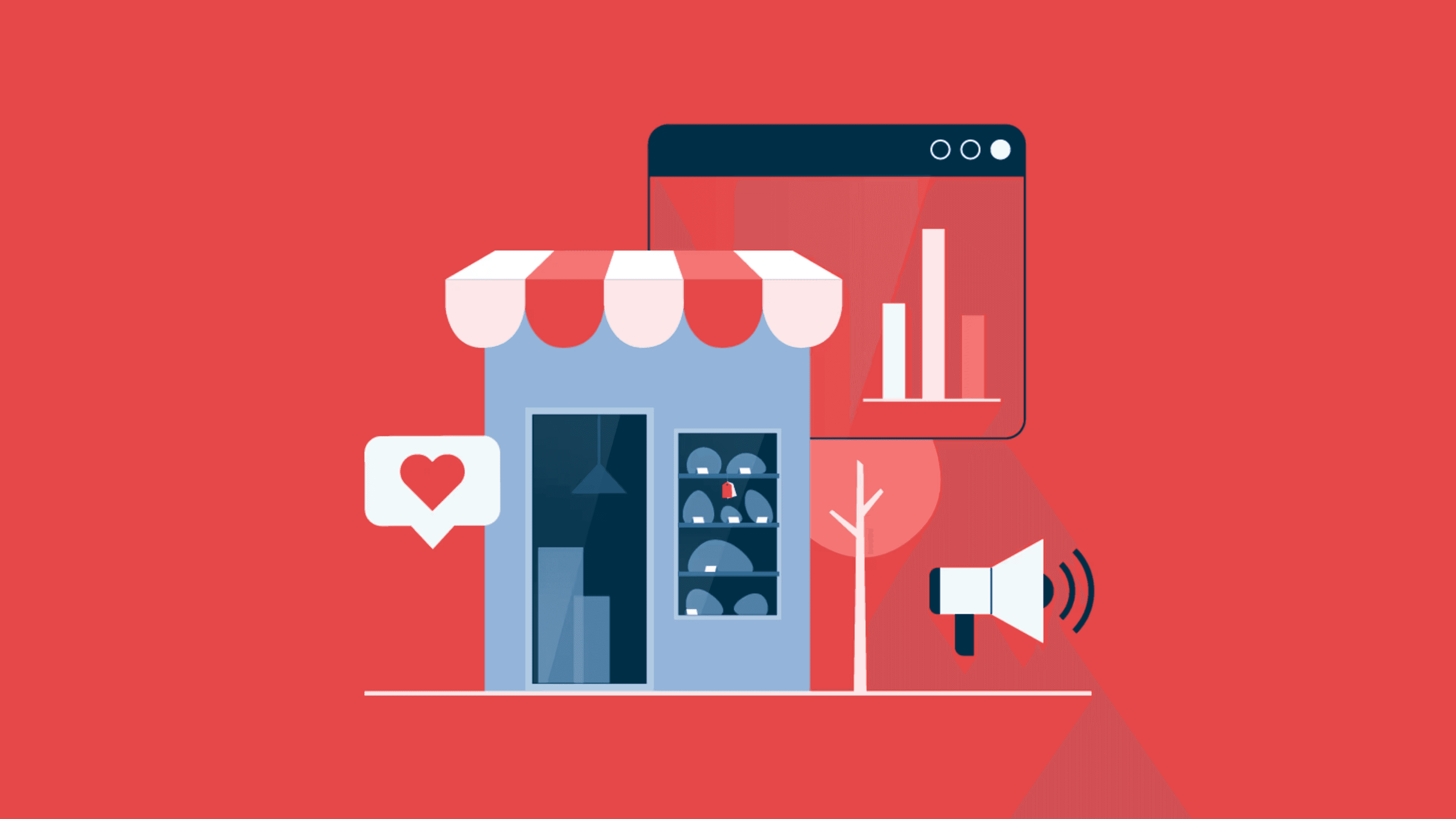
什么是第一方数据?初学者指南
你收集客户数据吗?答案很可能是肯定的(即使你不知道)。无论是来自营销邮件的回应,还是来自营销软件的数据,甚至只是从客户那里得出的反馈,在你手头的第一方数据收集中,你拥有最有力的数据。为了理解为什么第一方数据如此重要,了解什么是第一方数据、优先考虑它的好处以及可能遇到的障碍是很重要的。下面你将找到所有这些内容,以及来自其他企业主的LIKE.TG调查结果,他们正在处理这个话题。无论你的业务处于哪个阶段,都对了解和利用第一方数据有所帮助,作为一名中小企业的营销人员,它将帮助你获得更多的客户,并更好地为你已经拥有的客户提供服务。什么是第一方数据?在营销背景下,第一方数据(1P)是关于你的客户、订阅者或访问你的任何营销渠道的信息。这包括你网站上的用户行为、移动应用、社交媒体渠道和营销电子邮件等。这些数据尤其有价值,因为它们直接来自你的客户。第一方数据的一个子集,称为零方数据,还包括客户故意提供的信息,例如对调查的回应。第一方数据的来源以下是据LIKE.TG的2022年隐私专注营销人员调查显示的一些常见的客户数据来源*:常见的第一方数据来源还包括你拥有无障碍访问数据的所有营销渠道。这些渠道可以包括:网站:如上面的调查数据所示,对于任何企业来说,网站都是最重要的第一方数据来源之一。当用户访问网站、与内容互动、注册订阅或从其他营销渠道找到网站时,这些都是宝贵的信息,可以改善客户体验,或根据客户行为优先考虑未来的网站更新。社交媒体:作为消费者和企业之间的一种无处不在的互动方式,社交媒体是收集客户数据的一个高流量接触点。社交媒体平台通常提供本地分析功能,可以提供有价值的人口统计信息以及客户对高效内容的见解。这包括诸如展示次数、参与度和链接点击等指标,这些指标可以为未来的营销内容(在社交媒体和其他渠道上)提供信息。电子邮件:根据LIKE.TG的2022年电子邮件和社交媒体营销调查**,作为一种被100%的企业采用的渠道,电子邮件代表了一个巨大的机会,可以接触到你的客户,你不能错过。电子邮件是消费者最喜欢的沟通方式之一,它完全由你的企业拥有和控制,这意味着你对你收集的数据具有完全的访问权和控制权。移动应用:如果你的企业拥有自己的移动应用、在现有移动平台上运营,或者进行SMS营销,那么就有大量的客户数据可以收集。短信的开启率高达99%[1],这为你学习更多关于与你的客户产生共鸣,并进一步获得参与度(希望能转化)的内容类型提供了难得的机会。其他类型的客户数据有哪些?除了第一方数据及其子集零方数据之外,还有两种值得讨论的客户数据形式。第二方数据和第三方数据分别表示已被其他公司出售或共享的信息,或从独立的数据聚合机构获取的信息。为什么专注于第一方数据很重要?对于我们来说,你应该了解所有可用类型的客户数据,但它们不应该是首要考虑的,特别是对于资源有限的中小企业而言。第一方和零方数据是你控制的数据,是你的客户自愿提供的。这种类型的数据更能体现你的受众真实的情绪,并且获取和使用这些数据的成本较低。完全拥有的数据还可以更好地融入你的营销技术体系的其他领域,进一步提高技术的效果(显然也是你的营销结果)。最后,拥有可靠的客户数据让你对于营销个性化的机会有更深入的了解,从而改进客户旅程,提供更个性化的体验,提供更大的细分机会,并从整体上提高营销投资回报率。使用第一方数据的好处是什么?提升客户体验第一方数据是直接从你的客户那里获得的数据。由于这些数据可能包括关于他们对产品/服务的需求、他们与你的内容互动的频率,或者揭示导致他们不转化的原因等信息,所以在改善客户的整体体验方面,它尤为重要。利用这种方式使用第一方数据,制作真正与你的客户共鸣的个性化营销内容,加强网站体验的效率,为产品和服务的开发提供信息,甚至通过定义客户人物进一步界定你的目标受众。数据洞察更可靠由于第一方数据直接来自客户,它提供了对你的目标受众在关系中想要什么的最准确洞察。这也适用于社区情绪之外的客户信息(例如人口统计、公司统计和心理统计数据)。你可能会对你最忠诚的客户有一些惊人的发现,包括一个你可能不知道的强大的受众细分。这使你能够在营销角度上更加包容性,从而扩大你的营销视角(并在普遍意义上成为一个更有社会责任感的企业)。提高投资回报率当适当实施时,改进的客户体验、更有洞察力的数据以及由此而来的营销工作的更新将必然提高你的营销投资回报率。无论是通过更高效地应用你当前的策略,对你的受众有新的了解,还是通过增加营销内容的个性化,所有的努力都将导致改善的营销结果。使用第一方数据面临的挑战是什么?收集数据和得出洞察需要资源和专业知识如果你还没有一个健全的客户数据管理(CDM)策略,要迅速掌握它可能会有些困难。正确分析客户数据需要了解你获取客户数据的来源,将营销工具连接在一起以共享数据,以及实际进行分析的人员。我们将在下面讨论更多关于这些资源的内容,但在计划更多地利用第一方数据时,要注意这个要求。数据的使用需要明确的目标,并与组织目标相匹配在没有商业目标或营销目标的情况下收集数据,有点像堆积土壤,但没有卡车来运送它。当然,你的数据很多,但你无法利用它。要理解什么数据最重要,以及它将如何影响你的战略和策略,拥有明确的营销目标是至关重要的。在我们关于如何分析营销数据的文章中,我们介绍了一种SMART目标设置方法,在开始时定义最重要的关键绩效指标。简单来说:设置SMART目标可以使你的客户数据洞察朝着具体且可衡量的目标发展。分析和实施第一方数据是一个需要维护的持续过程如前所述,充分利用你的客户数据涉及很多初步工作。然而,这也是一个持续的过程。确保数据源保持准确,并应对来自行业巨头的变化(例如第三方Cookie的结束和特定平台的法规),需要长期投入大量的时间和精力。客户数据管理工具和资源技术有多种软件解决方案可帮助客户数据管理。数据管理:数据管理软件充当统一的数据收集平台,对来自各种渠道的业务数据进行组织和分析,如软件、客户数据库和社交媒体等。其目标是以易于使用的格式呈现数据。这一方面尤为重要,尤其是考虑到根据LIKE.TG的2022年数据可视化营销调查***,89%的营销人员表示,他们的经理更喜欢使用数据可视化的报告。客户关系管理(CRM):CRM软件是一种技术解决方案,帮助你的企业管理当前和潜在客户的数据,目的是与他们保持良好的关系。它可以让你跟踪潜在客户,发送营销电子邮件,自动化销售任务,并创建自定义报告。CRM软件简而言之,是所有与客户相关的信息的集中存储库。客户数据平台(CDP):与通用的数据管理平台不同,客户数据平台是一种软件解决方案,帮助从网页表单、电子邮件、社交媒体等来源收集和组织客户数据。真正的客户数据平台的优势在于分析客户的终身行为。此外,CDP能够影响各种类型的营销,如电子邮件、短信和社交媒体,同时保留数据以建立深入的客户资料。专业知识除了正确的技术,还重要的是培养能够运营技术的人。无论是你自己、内部团队,还是从组织外部寻求帮助,对于谁将负责收集、分析和利用你的客户数据,制定计划至关重要。根据你的企业当前的发展阶段,这可能意味着聘请一个第三方服务提供商,比如一家数字营销或营销分析机构。确定你需要哪种类型和级别的关系的最佳方法是评估你的营销目标和业务目标。如果你已经有了坚实的基础,只需要在加强你的客户数据分析方面提供策略性帮助,那么一家营销分析机构可能是适合你的选择。他们可以通过外部视角识别你的流程中的差距和机会所在。然而,如果你还没有弄清楚一些基本问题,例如是否正确调整的技术栈、将营销目标与组织目标相匹配等,那么最好寻求一家更通用的数字营销机构来帮助你回答这些问题。总结:我准备好为我的业务实施第一方数据策略了吗?第一方数据代表了你控制的客户数据的最佳利用方式,可以更加明智地决策你的营销工作。第一(和零)方数据不仅提供更有价值的关于你的受众的洞察,还改善了客户体验,并在有意义地实施时增强了整体营销投资回报率。在开始整理你的第一方数据的过程中,询问自己以下问题以帮助你入手:我们现在可以访问哪些数据,以及我们如何利用它?我们当前拥有的工具是否具备开始所需的客户数据功能?我们当前的工具是否良好地集成在一起?谁将负责我们的客户数据工作?这个人(或团队)是否具备管理我们的客户数据所需的数据素养技能?从这个角度来思考,早期确保你具备技能和技术,以充分重视你拥有的完全拥有的客户数据。注意:本文中包含的应用程序截图示例,用于展示特定功能的上下文,并不意味着认可或推荐。

什么是获得的媒体?一份全面指南
获得的媒体可以帮助您的企业建立品牌信誉并获得潜在客户的信任。对于大多数中小型企业所有者来说,内容营销可能会让人感到不知所措。包括付费、自有、共享和获得的媒体在内的与营销相关的术语可能会让您感到迷茫。了解每种媒体的作用对于您企业的持续成功至关重要。虽然许多人依赖获得的媒体来满足其营销需求,但将这种促销营销策略与付费和自有媒体等其他形式的广告结合使用,可以提供一个极好的机会来提高您的投资回报率。对于大多数中小型企业而言,赢得媒体的关注可能是棘手的,因为大型企业和公司通常主导主要媒体。通过了解什么是获得的媒体以及它如何适应您的营销计划,您可以增强您企业的信誉。什么是获得的媒体,为什么它很重要?获得的媒体是您未支付或自己创建的任何形式的媒体。这包括社交分享、评论和新闻稿。这种有机且高效的促销营销形式也是最具挑战性的媒体类型之一。获得的媒体是数字营销组合中的三种媒体类型之一。另外两种包括:自有媒体:包括您自己创建和分发的营销内容,例如您的博客、电子邮件和社交内容。付费媒体:包括通过各种渠道进行的付费推广,包括社交媒体广告、展示广告、按点击付费和付费社交媒体。由于其有机性质,您无法控制获得的媒体。例如,一位关注者可能在访问您的商店后在Instagram上提到您,或者一位现有客户可能会写一篇非请求的评论。由于这个过程不是付费的,并且基于真实的评论,它有助于获得潜在客户和客户的信任,增强您的整体品牌信誉,并帮助您推动有机转化。获得的媒体有什么好处?在您的中小型企业投资获得的媒体战略之前,重要的是考虑其优势。建立信誉和信任在饱和的市场中吸引注意力并获得信任通常是具有挑战性但至关重要的。通过获得的媒体,这基本上是一种“口碑”方法。来自有影响力的人和主流媒体的提及可以帮助您建立信誉并获得潜在客户的信任。成本效益地扩大您的影响力当消费者对您的产品或服务感到满意并在线或线下与他们的朋友和家人分享他们的体验时,他们将分享关于您品牌的信息,这不需要您承担任何经济投资。这使您能够在不承担任何费用的情况下触达更广泛的受众。如有需要,您可以投资于全面的公共关系和推广策略,以获得顶级出版物的认可。通过评论提供有价值的反馈根据Gartner Digital Markets的2023年中小型企业软件购买趋势,86%的企业认为验证的评论对于购买决策至关重要,这显示了社交证明在推动销售和信任方面的力量。考虑到49%的客户表示他们在评估购买时会参考评论和用户评级,继续投资于这种类型的媒体覆盖。获得的媒体的不同类型您可以几乎免费获得所有获得的媒体。尽管您可能需要投资于公关公司来推销您的品牌、专业知识或产品,但您获得的媒体是免费的,因为您不直接为广告或文章中的位置付费。但是在实践中是什么样的?以下是更具体的获得的媒体示例:媒体报道:一家主要出版物撰写了关于您的企业的文章,突出了您的品牌独特之处,例如您的使命或即将举办的活动。社交提及:一位客户对您的公司有很好的体验,并在社交媒体上发帖。社交分享:您发布了一个值得病毒传播的视频,在社交媒体上产生了内容分享、提及和互动。免费影响者:由于您的品牌的方法、使命、政策等,您被一位影响者采访进行视频或播客。评论:您的产品或服务在行业特定的出版物上进行了评论和发布。如何为您的品牌产生获得的媒体虽然获得的媒体具有多种好处,但在高权威网站和出版物中获得提及可能很困难,特别是如果您仍在建立品牌的在线存在。以下是增加您的中小型企业获得的媒体机会的最佳方法:投资于优质内容和精心设计的网站。精选易于理解、愉快和吸引人的内容可以提高用户体验,增加获得未付费的促销的机会。提升您的SEO排名,增加在搜索引擎中的可见性。您可以采取各种内容营销策略,包括搜索引擎优化(SEO),以增强您的品牌影响力。优化您的网站关键词、定期更新以保持相关性、投资于优化链接构建和撰写良好的内容都可以增加您的在线可见性。关注您的邮件列表并策划独特内容。与读者建立关系,个性化您的电子邮件内容以满足他们的期望和体验。如果您正确执行电子邮件营销策略,您的内容可以被重新利用和分享,推动您的总投资回报。参加行业特定的贸易展览。尽管参加贸易展览可能不会直接帮助您推动在线增长,但忠实客户倾向于通过社交媒体渠道分享他们的积极经验。在行业特定的贸易展览中结识潜在客户可以帮助获得新客户和品牌大使。如何衡量获得的媒体的影响许多中小型企业没有充分发挥获得的媒体的潜力,因为他们认为衡量其投资回报率很复杂。通过使用合适的工具,您可以跟踪您的网站转介和媒体提及,以便轻松衡量您获得的媒体的成功。像Google Analytics这样的网络分析工具可以帮助您免费获取与转介相关的见解。您还可以使用Google Alerts,以便在公司在网络上被提及时进行检查。获得这些信息可以帮助您定位持续的机会,加强客户关系,增加受众,并启动潜在客户生成策略。要衡量您的声音占有率(SOV),您可以将您的品牌知名度与竞争对手进行比较,并通过投资于品牌管理和社交分析工具自动化此过程。遵循这些获得的媒体营销最佳实践在加强获得的媒体作为您的在线营销策略一部分的方法时,请记住以下几点。从一个坚实的获得的媒体策略开始。这一步将确保您的努力高效且可衡量。重点是明确您的目标、确定您的受众、研究表现良好的内容、研究可以与之建立联系的影响者,并构建分享您获得的媒体的策略。不要忘记付费媒体覆盖。付费媒体技术,包括影响者营销,可以帮助您获得获得的媒体的关注。这一渠道可以帮助树立信誉和第三方推广。深入了解可以与您的品牌建立互惠关系的影响者。研究他们制作的内容、他们的受众喜欢的内容和对他们重要的主题,然后发送一个相应的提案。重复此过程以与记者建立关系。使用正确的工具和数字资源来推动您的目标。存在许多公关软件选项,帮助您更好地与记者建立联系,衡量您获得的媒体的影响,了解您获得的媒体价值,创建定制报告等。依靠营销分析软件尤为重要,以识别模式。寻求有关获得的媒体策略的帮助获得的媒体是一个良好执行的公共关系计划的结果。这是一个专注于建立和管理关系的持续过程。如果制定正确的策略,您将从持久的结果中受益。与付费媒体不同,获得的媒体不需要持续投资来推动知名度和转化。相反,专注于生成优质内容和富有意义的关系社区。
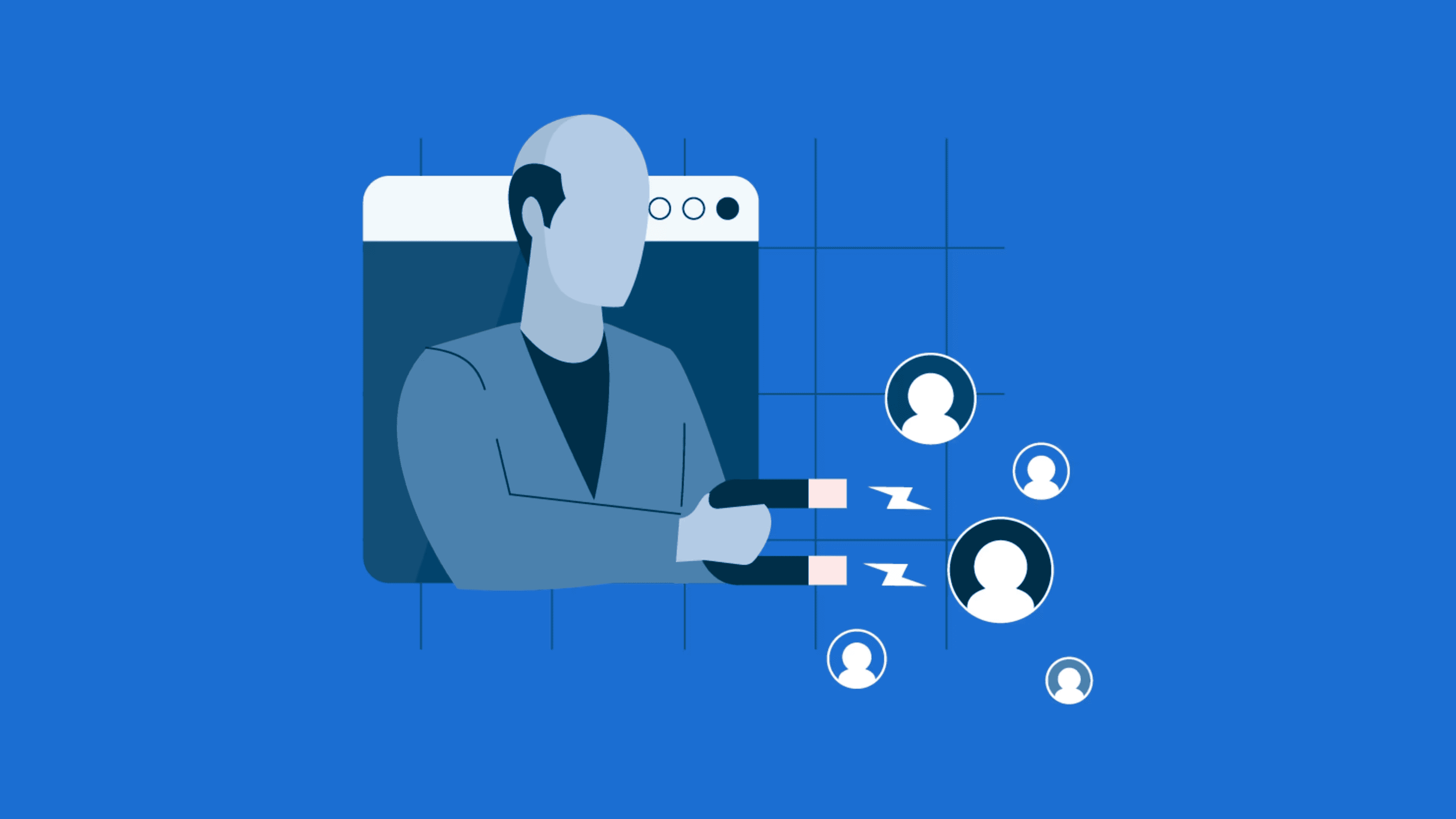
中小企业内容营销指南:提示与创意
63%的营销人员正在使用内容营销;以下是如何在您的企业开始的方法。对于中小企业来说,内容营销一开始可能看起来很简单,但一旦投入进去,您会很快意识到它有多么复杂。有许多不同的因素,需要跟踪很多类型的内容和指标。还有一个任务,就是养活内容营销的“野兽”——它非常饥饿,尤其是当您的企业不断发展壮大时。您需要对技术和人才进行大量投资以维持您的内容营销运营。如果您不这样做,您的竞争对手将迅速取代您。Gartner的研究显示,2022年,37%的首席营销官增加了对内容和信息的投资,而41%的首席营销官增加了活动的创建和管理。现在是为中小企业建立一个无懈可击的内容营销战略的时候了。利用最新的研究和数据,以下是中小企业的最佳内容营销提示,让您在竞争中保持领先并提高投资回报率。为什么中小企业使用内容营销?内容营销人员通常旨在创建品牌知名度,教育受众,并通过内容营销战略建立信任。然而,内容营销之所以如此受欢迎,还有另一个原因——它可以被衡量和优化。您可以追踪您的表现,并将其与投资回报率联系起来。内容营销是一种对于任何规模的企业都非常强大的工具,甚至对于那些规模较小的团队也是如此。Capterra的市场营销和销售对齐调查发现,63%的营销人员表示他们的公司将内容营销作为其营销或广告活动的一部分。然而,并不是每个企业都做对了——Gartner发现,只有33%的营销人员对他们的内容指标与企业指标直接相关感到自信。所以,虽然许多中小企业认为他们有正确的方法,但他们的策略却不尽如人意。他们忽视了他们开始投资内容营销的核心原因。关键是建立您的战略基础,然后随着努力的扩大调整您的策略。最重要的是,知道您为什么要投资内容营销。您的目标是什么?让这些原因为您从一开始就制定一个全面有效的计划,并追踪表现。中小企业内容营销的好处了解内容营销的潜力可以帮助指导您的战略。这些潜在的优势将激励您,并为您提供了洞察力,以确定是否是时候进行改变。以下是中小企业考虑的一些内容营销的好处:提高品牌认知、消费者信任、权威性和忠诚度。确定您的受众的痛点,并创建解决这些问题的内容,帮助您生成潜在客户并增加销售额。支持一种具有成本效益的方法。如何为您的中小企业创建一个内容营销战略在创建内容营销战略时,您很容易迷失在众多可用资源中。当您正确实施时,您所阅读的许多建议都会带来成功——有些方法可能适合您,但有些则可能不适合。关键是要开始,保持一致,并进行适应。建立一个成功的战略需要时间,并需要测试,所以要明白这是一个不断改进的过程。要开始建立您作为权威领导者的声誉,请牢记以下步骤。1. 深入了解您的目标受众的需求首先要确定您的受众,以便为他们优先提供内容的策略。正如Custom Neon的联合创始人Jess Munday所解释的那样,“内容营销不仅仅是生产漂亮的图片和引人注目的广告。输出结果必须经过战略规划——我们的目标群体是谁,他们的痛点是什么,我们如何能够最好地向他们展示我们的解决方案?我们如何构思引人注目的内容来培养信任和激发愿望?”深入了解您的受众,将这个过程进一步推进。Munday说:“我们的目标受众在哪里阅读和观看什么,他们在谷歌上搜索什么,他们使用哪些社交平台?我们的竞争对手如何与他们互动?他们的驱动力是什么?价格、服务、可持续性..."您的受众是独特的,因为您的品牌是独特的。在制定战略时,请记住这一点。您越早确定您的目标受众以及他们对您创建的内容的期望,您就越早享受到良好的投资回报率。/ 关键要点了解您的受众与理解您的受众之间存在差异(例如,您拥有多少关注者)是一个不断的过程,您需要深入了解受众的动机、挑战、目标和行为。依靠消费者数据和分析。您获得的洞察将构成您战略的基础。关注您如何接触到您的目标受众,以及哪种词汇会引起您的目标读者的共鸣,并以真实的语气与他们沟通,这种语气代表了您的品牌。2. 选择您的内容渠道内容营销的可能性从电子邮件营销和博客到社交媒体和播客等形式都很广泛。这可能是令人不知所措的部分,但您可以利用众多可用的类型和渠道来开发独特的方法。最佳组合将取决于您的行业、受众和业务目标。根据HubSpot的调查,图片、博客和视频是2022年创建的内容的前三种类型。以下是您的一些选择:更新您的网站首页和博客:这个渠道可以提升您的SEO,提供价值,增加品牌知名度,生成潜在客户,并提高转化率。利用社交媒体,以针对特定兴趣的受众。通过使用这个渠道,您还可以收集宝贵的数据。短视频内容,如Instagram和TikTok的短片非常有效。考虑视频内容和播客,它们越来越受欢迎。Gartner发现,44%的首席营销官计划在2023年增加对数字视频广告的投资。[5]添加有门槛的内容,以帮助推动您的电子邮件营销战略,尤其是在提供思想领导力文章时。利用重新利用的内容来帮助实现您的关键绩效指标(KPI)。您可以将任何表现良好的内容重新利用为不同的媒介。如果您写的博客文章进入了谷歌的第一页,将其转化为网络研讨会或一系列Instagram帖子。/ 关键要点确保根据您的目标选择适当的KPI来与您的渠道保持一致。因此,要通过启动博客和利用社交媒体来增加品牌知名度,选择网站流量、覆盖范围和参与度等KPI。3. 建立一个生产计划将您的内容营销战略视为一张路线图。在创建内容时,您需要制定一个计划,以将该内容展示给您的受众。您选择生产的内容类型将指导您的分发策略。图片或信息图表适用于Instagram,而博客文章的链接可能在Facebook、Twitter/X或电子邮件等渠道上表现更好。一旦确定在哪里发布内容,就是创建一个日历的时候了。请记住,保持一致性至关重要。您的日历将确保您定期发布新鲜内容,包括重新利用的内容——许多营销人员都忽视了这一点。/ 关键要点虽然可以进行更改,但尽量提前一个月创建一个完整的日历。您应该有一个清晰的计划,以在不同的渠道上持续交付内容。添加关于您将在每个渠道上发布的内容的详细信息,考虑即将发布的公告、季节性考虑因素和任何正在进行的系列。衡量您的内容营销活动的结果在如今竞争激烈的数字世界中,区分您的企业是至关重要的。如果您基于您的内容脱颖而出,那么您已经处于领先地位。要知道是否是这种情况,您需要衡量您的活动的表现。请牢记这些指标,选择与您的业务和活动目标相一致的指标。页面浏览量报告独立访客查看的网站页面数量,因此追踪此指标可以了解您的内容与受众的共鸣程度。平均停留时间也是一个好的指标考虑。下载量是一个跟踪可下载内容(如电子书、模板和案例研究)的直接指标。深入了解地理位置或用户是如何找到该内容的——他们使用了哪些关键词?转化率衡量完成所需操作的用户百分比。这些指标范围从点击率到新访客转化率。您可能希望跟踪有多少访客填写了表单,或者通过社交媒体活动有多少访客进行了购买。 创建一个成功的内容营销战略对于中小企业业主来说,内容营销需要根据最新的趋势、您收集的数据和不断变化的业务目标进行不断调整。因此,无论您是新的中小企业还是快速增长,始终存在着不断变化的需要。
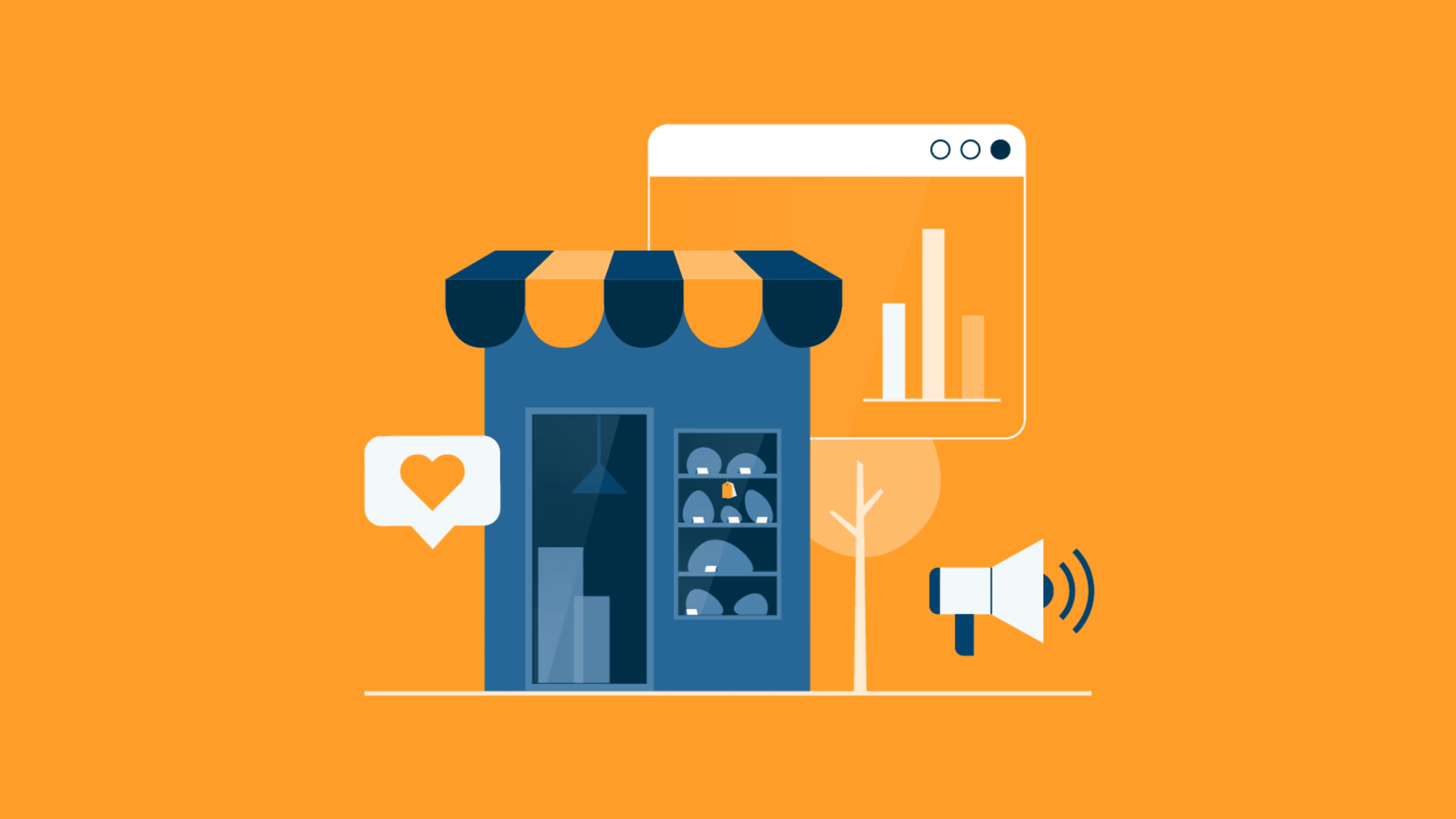
关于本地营销的一些知识
找到准备做生意的附近的人将近四分之一(24%)的中小企业将吸引和保留客户确定为他们作为企业所面临的最大挑战。* 如果您是依赖于实体店面访客的本地业务,风险更高,因为您不能依赖互联网。或者你可以吗?通过超本地营销,您可以使用在线营销策略来吸引特定地理位置的潜在客户。了解基本原理并利用一些关键策略将大大增加您的业务的客流量。以下,我们将向您展示一些实现这一目标的方法,以及来自本地营销专家Delia May的额外见解。Delia May曾在Torchy's Tacos和Peet's Coffee担任品牌营销和社交媒体专家。什么是超本地营销?简单来说:超本地营销是针对特定地理位置的客户的过程。超本地策略超越标准的本地营销,通过专注于更小范围(甚至仅仅是几个街区)来更加具体。对于那些通常依靠人流量的实体店面经营的企业而言,这种营销尤其有效。超本地营销对于小企业为何重要?超本地营销为小企业吸引已经准备好购买的客户提供了独特的机会。如果有人搜索“我附近的咖啡店”,他们很有可能就在附近寻找饮料。与更广泛的营销活动相比,这种策略所需的投资相对较小,因为受众更小,本地搜索查询更加具体。超本地营销本身也在稳步增长。预计到2032年,超本地营销的复合年增长率将达到11.5%,成为一个价值6.4万亿美元的行业。这主要归因于消费者对便利性的需求,营销内容的个性化程度提高以及COVID-19大流行后市场发生的更大的数字转型。超本地营销策略优化您的搜索存在改进超本地营销效果的第一步是优化您的Google我的企业列表。您可能会惊讶地发现,不是所有企业都已经认领了他们的企业列表,即他们对搜索者看到的信息没有完全掌控。在Google上添加或认领您的企业列表非常简单,可以实时共享重要信息,例如您的地址、电话号码和营业时间。第二个组成部分是采用地理围栏等策略。地理围栏使用GPS、Wi-Fi和蜂窝数据等技术在现实位置周围建立虚拟边界。当消费者进入该边界时,他们可能会收到推送通知或在搜索特定服务时看到推广内容。对于May而言,能够根据特定位置定位客户的重要性不言而喻,想象一下,对于那些依赖实体店面的企业来说,这是一种非常强大的策略,可以吸引人们前来。采用多渠道营销多渠道营销是许多现代营销计划的重要组成部分。与消费者期望在哪里找到品牌在线的一致体验越来越重要,通过各种渠道(社交、电子邮件、网络和移动)接触客户变得越来越重要。作为移动营销的关键组成部分,超本地策略恰好适应了这种动态(特别是对于依赖实体店面的企业而言)。这是因为移动设备的普及性和消费者希望随时随地与企业互动的愿望。事实上,他们特别愿意在接收到通知后的五分钟内查看手机。除了与移动设备紧密结合,您还可以利用内容营销作为超本地努力的一部分。如果您制作书面内容,请考虑制作与您的企业所在社区相关的本地化内容。您还可以在社交媒体上分享与特定地区相关的内容,发布与特定地区相关的内容,以吸引实际在当地的人。在更进一步的情况下,您可以添加电子邮件营销,以引导用户访问您的社交账号或托管您的书面内容的地方(最好是您的网站,以提高流量)。创建和推广本地化内容无论是内容营销、社交媒体发布、电子邮件通讯还是其他任何形式的内容,为具有本地存在的任何企业创建和推广本地化内容都是一个好主意。May还建议根据您在该地区是否已经存在的情况来调整您的策略。如果人们了解您的品牌,您可以专注于吸引已经激动的粉丝。如果您是该地区的新品牌,您需要专注于树立认知并更多地传达您作为一个企业的特点。这还可以包括通过在线社区成员的用户生成内容(UGC)来推广。May举了一个小例子,发布Instagram上的一张特定位置的照片,并让用户猜猜它是哪里,这样可以增加互动并给社区成员一个机会认可一个他们熟悉的地方。此外,当有人以积极的方式在社交平台上提到您的企业时,他们已经是您的粉丝了,扩大宣传只会进一步增加他们的忠诚度。对于May来说,这是奖励(或创造)品牌传播者并与社区建立联系的绝佳方式。另一个本地化内容的例子来自与当地组织建立合作关系。这种社区参与形式可以是赞助当地活动,在热门公共场所(例如临时推出的活动)设立展位,或与当地组织合作推广慈善事业或募捐活动。这也是让您的团队参与的好方法,无论是为参与的本地活动提供创意意见,还是确保您的品牌声音和语调得到适当的代表。优化您的网站以适应移动设备平均品牌网站流量的一半(51%)来自移动设备,随着时间的推移,这个数字可能会增加。有多种方法可以使您的网站对移动用户更友好。首先,许多网络托管公司提供自动化工具,可以将传统网站更新为在移动设备上进行最佳浏览。这比完全重新建立一个新网站要容易得多(并且更具成本效益)。如果您需要比托管公司提供的功能更多的功能,还可以选择专门的网站建设软件。如果您目前的移动和桌面网站是分离的体验,那么首先要开发响应式设计,优化页面速度并压缩图像。对于那些已经在多渠道营销努力中有移动网站的成熟企业来说,采用或优化数据驱动的营销策略至关重要。这包括进行A/B测试以改善内容互动,或在网页表单上测试副本变体以获得更多的注册。为每个位置创建单独的微网站今天我们要讨论的最后一个最佳实践是为您企业的每个位置创建不同的落地页或微网站。这些内容可以都放在同一个主页上,但是为每个位置创建一个不同的页面非常重要,特别是如果信息在不同位置之间有所不同或涉及在线订单。对于May来说,这取决于现代网站体验中消费者对内容的期望:“作为消费者,几乎是人们的期望。我认为,至少要有一个列出所有位置的位置页面。”传统上,许多企业通过在每个位置上拥有单独的社交媒体配置文件来实现这一点。如果您在社交媒体上进行了大量的客户服务,这可能是行之有效的,但是这种策略正在变得越来越不流行,而更多地采用了针对移动设备优化的网站,并设置了单独的页面。超本地营销的好处和挑战超本地的好处易于设置认领您的Google列表,更新您的网站以确保准确性和移动友好性,并加强与当地社区的互动,这些都是实现有效超本地营销的明确可行的步骤。首先要更新所有在线业务信息以尽可能准确,然后从那里开始。更小的预算需求超本地营销中,您并不是在争夺分散在互联网上的庞大观众。您正在尝试接触一个非常小的本地观众,他们已经准备好进行转化。这种特定性意味着竞争较少,投入的资金也较少。性能测量简单超本地营销的目标是吸引更多的实体店面客流量。一旦您启动了超本地营销活动,就很容易看到是否实现了这个目标,您甚至可以建立方法来确定新策略是否产生了结果。例如,如果您使用忠诚度计划,追踪已接受和稍后兑现的优惠信息就是宝贵的信息。培养重复业务如果您能够接触到您所在地区的某个人并且他们来购买,那么您就有机会通过您的服务给他们留下深刻的印象,并使他们再次光临。他们已经找到您并从您这里购买,这意味着大部分工作已经完成了!超本地的挑战较小的受众虽然在当地市场上广告支出较少,但是要达到一个更小、更具体的受众可能是一种挑战。这意味着更重要的是集中在正确的渠道、内容类型和目标受众上,以有效地吸引他们。需要更具体和个性化的内容随着受众的减少,需要更个性化的内容。由于每天接收到如此多的营销信息,消费者愿意忽略或甚至停止与发送给他们无关消息的品牌做生意。[6]在推广超本地内容时,请确保其与客户具体相关、相关且最重要的是有用。缺乏人员或专业知识来管理工作成功参与任何新的营销活动都需要时间和专业知识进行管理。您可能没有人手来把握这种策略所需的时间和精力。如果没有,您可以选择提升员工的能力或效力,或者采取17%的企业主的做法,即雇佣外部营销帮助。如果您情况属实,雇佣一家数字营销机构是一个很好的选择。无论是需要短期帮助来启动和运行您的计划,还是需要长期合作来制定您的整体策略,您都可以寻求适合您需求和预算的适当的服务水平。您准备好拥抱超本地营销了吗?如果您是一家具有实体店面的本地企业,现在可能是时候拥抱超本地营销了。您当前的增长阶段和可用的技术将决定您采取的最佳第一步。在忠诚度计划、短信营销或更通用的移动营销平台之间选择,您有很多选择要考虑。然而,您将需要工具的帮助来启动超本地工作。首先,从评估您已经拥有的软件开始,因为一些营销平台提供强大的集成功能,使购买全新工具变得不必要。试图确定您当前的技术堆栈在哪些方面做得好,在哪些方面可以改进,然后制定填补这些差距的短期和长期计划。您可能已经有一个明确的选择,比如采用客户忠诚度计划,但如果没有,通用的移动营销平台是一个不错的选择,因为它提供了广泛的功能,不仅对您的超本地策略有帮助。
相关产品推荐











